

Hidden Galápagos and Peru
September 11-26, 2021
Mike and Judy Henderson
I'll leave the trip diagrams on each page so you can see where we are.


9/15/2021 (Wednesday) Tauck had arranged for an additional tour of Machu Picchu at 7am so we got up about 6am. But it was raining - pretty hard. We decided that since we had gone through Machu Picchu a few years ago, we'd skip the morning tour. You can see some pictures from that visit here.
It's hard to photograph rain, but this picture might help show how hard it was raining.
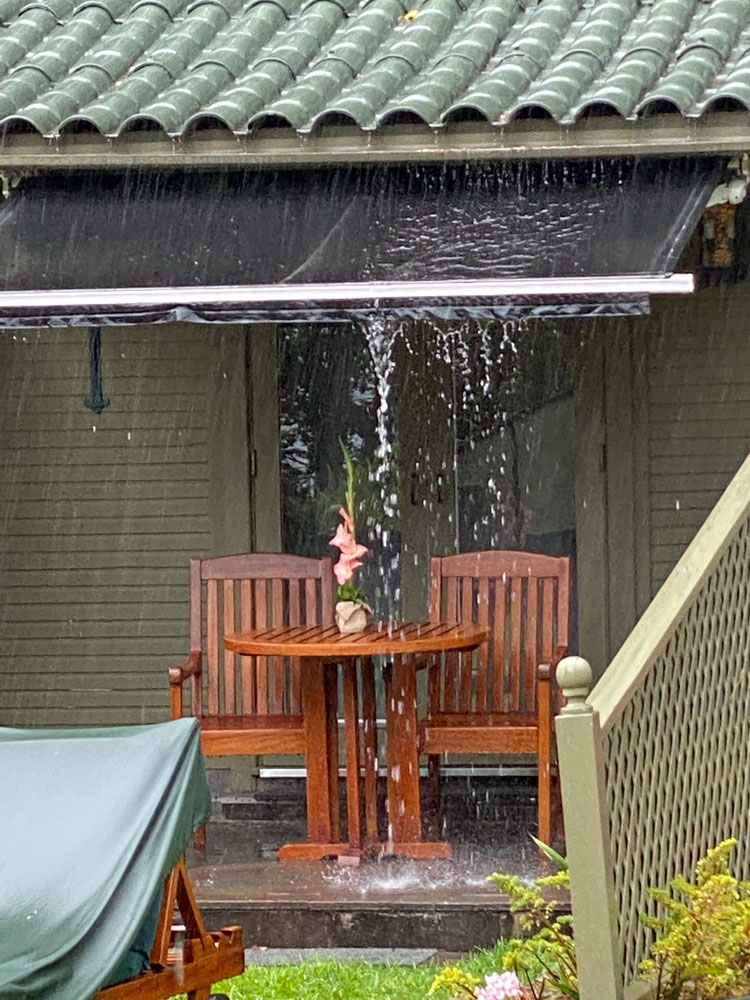
Some of the group went on the 7am tour and reported that the rain stopped fairly quickly after they entered the park. Here's a picture of our guide, Jamie, that was taken by one of the group that went on the morning tour.
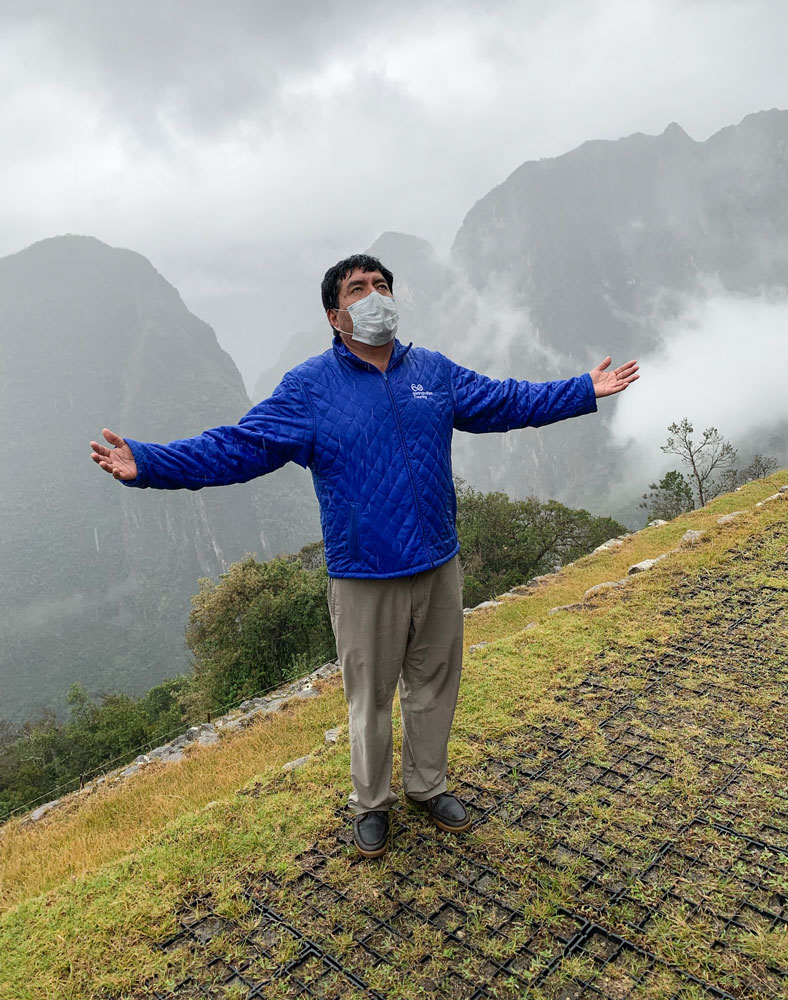
About 9am, we were on the bus heading down the hill.
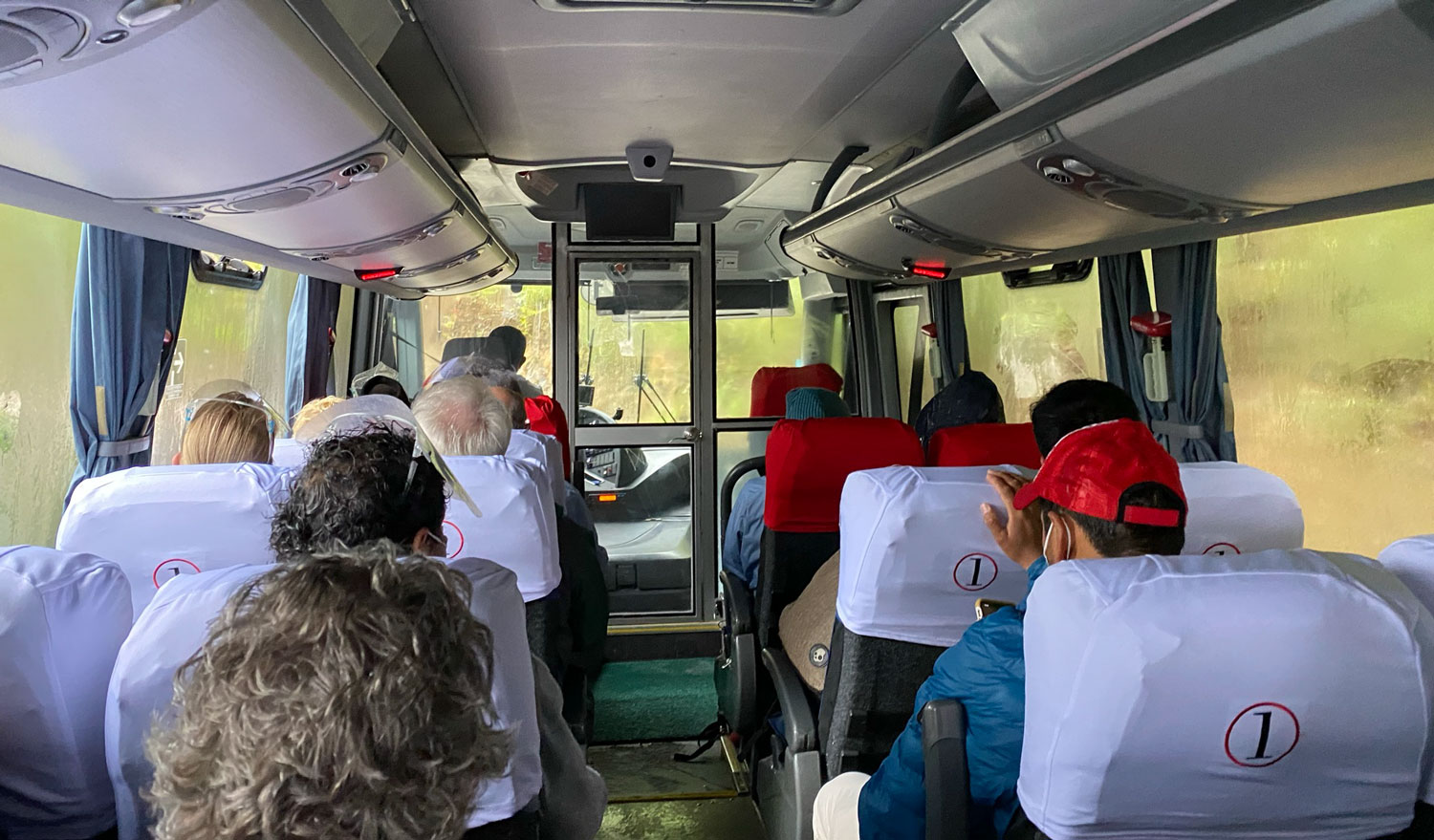
When we got to Aguas Calientes we headed to the train terminal. As we were crossing the bridge, we could see the line of people waiting for the buses up the mountain. Even in the rain, a lot of people want to see Machu Picchu.
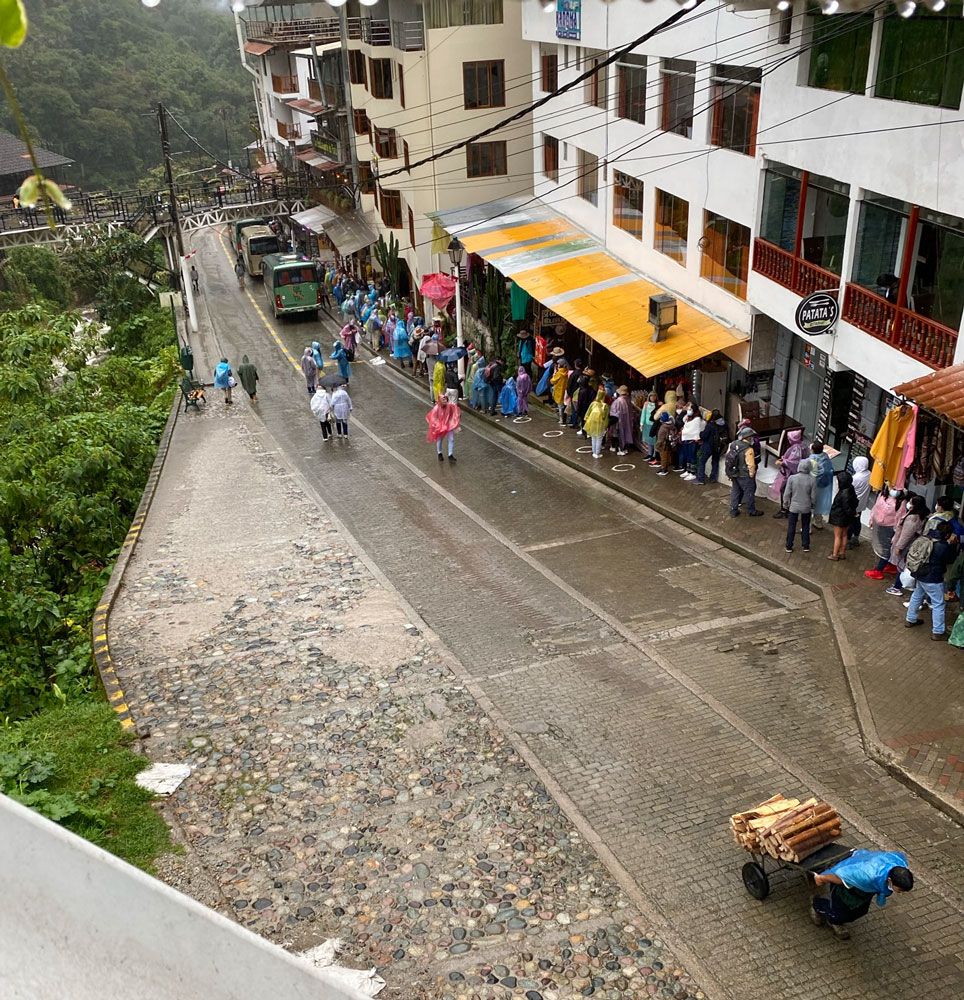
We quickly arrived at the train terminal, and waited in a very nice waiting room for our train departure. Marcos used the time to brief us on the upcoming day's activities.
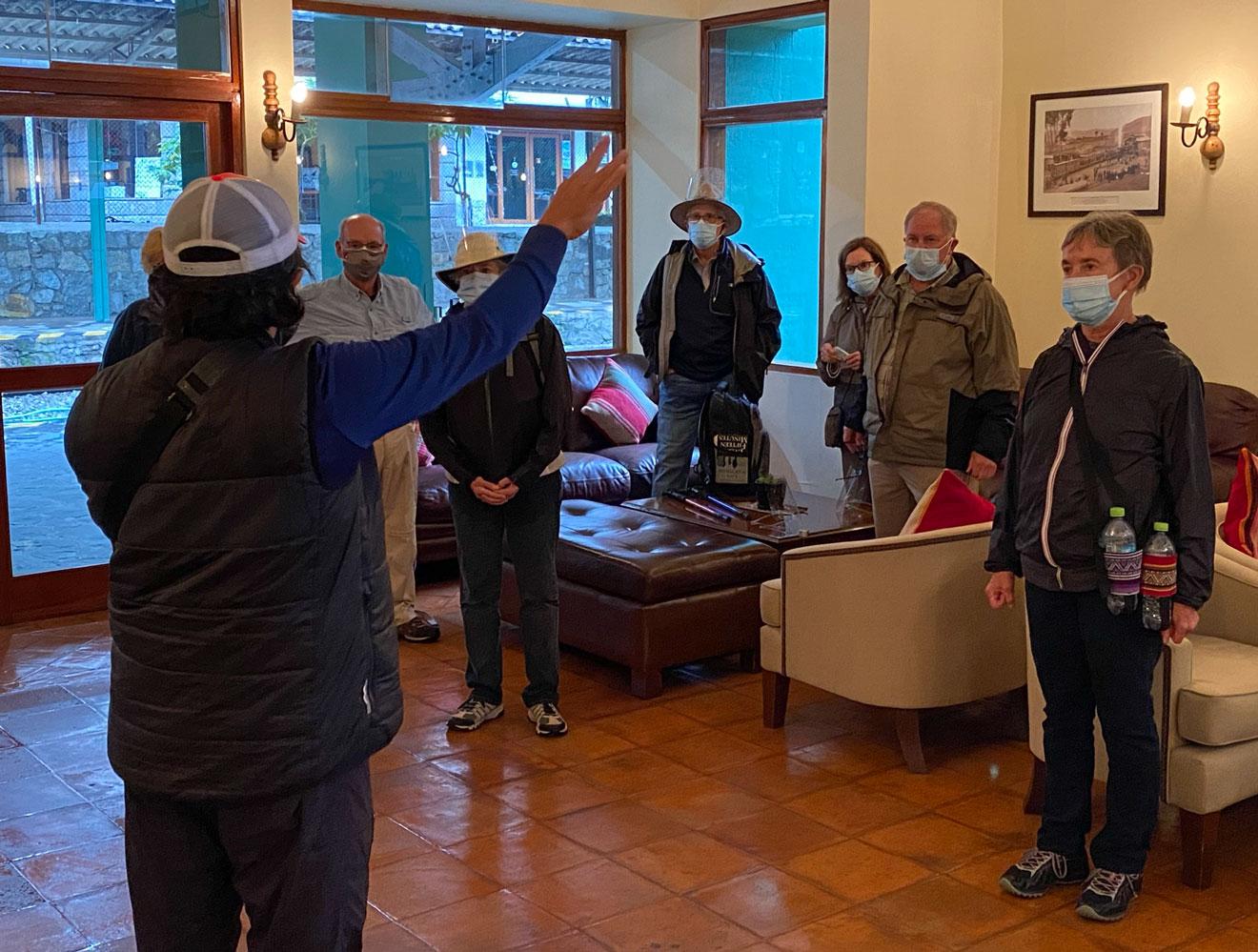
Soon we were on the train and headed back to Ollantaytambo.
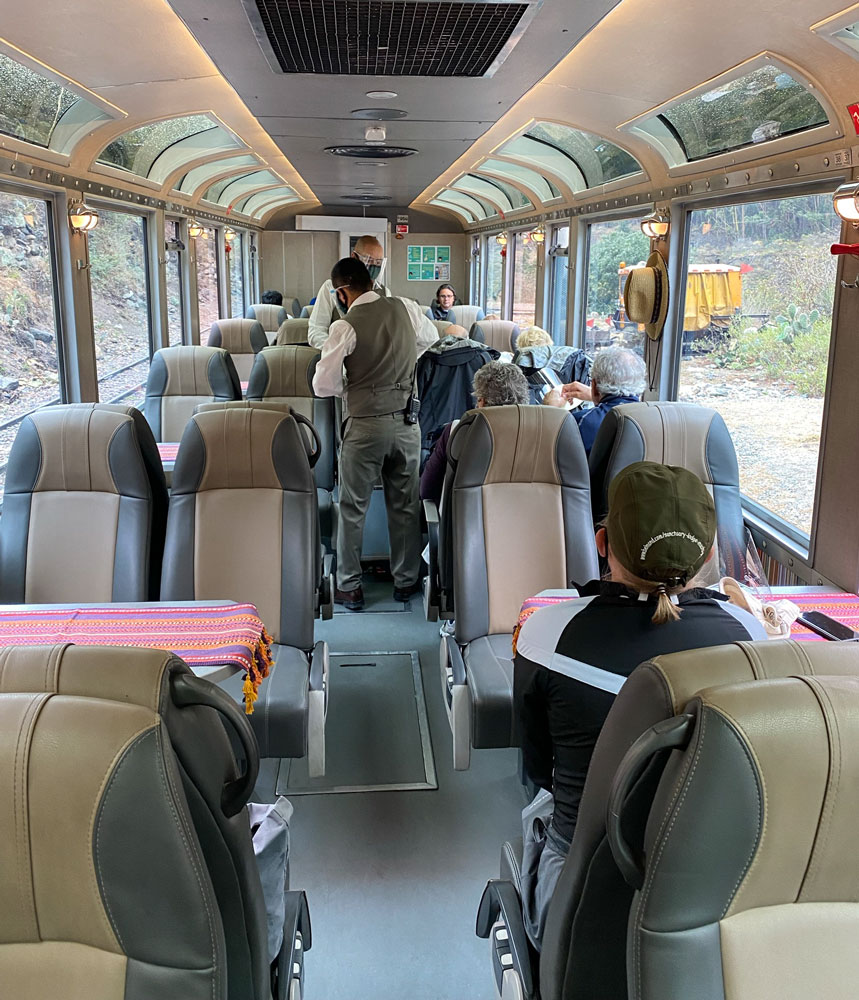
As we approached Ollantaytambo we noticed some sleeping pods on the mountain side. We saw two places where there were these pods. I don't know if they are the same company or different companies. I'm told that getting to your pod is a challenge and only experienced climbers should try this.
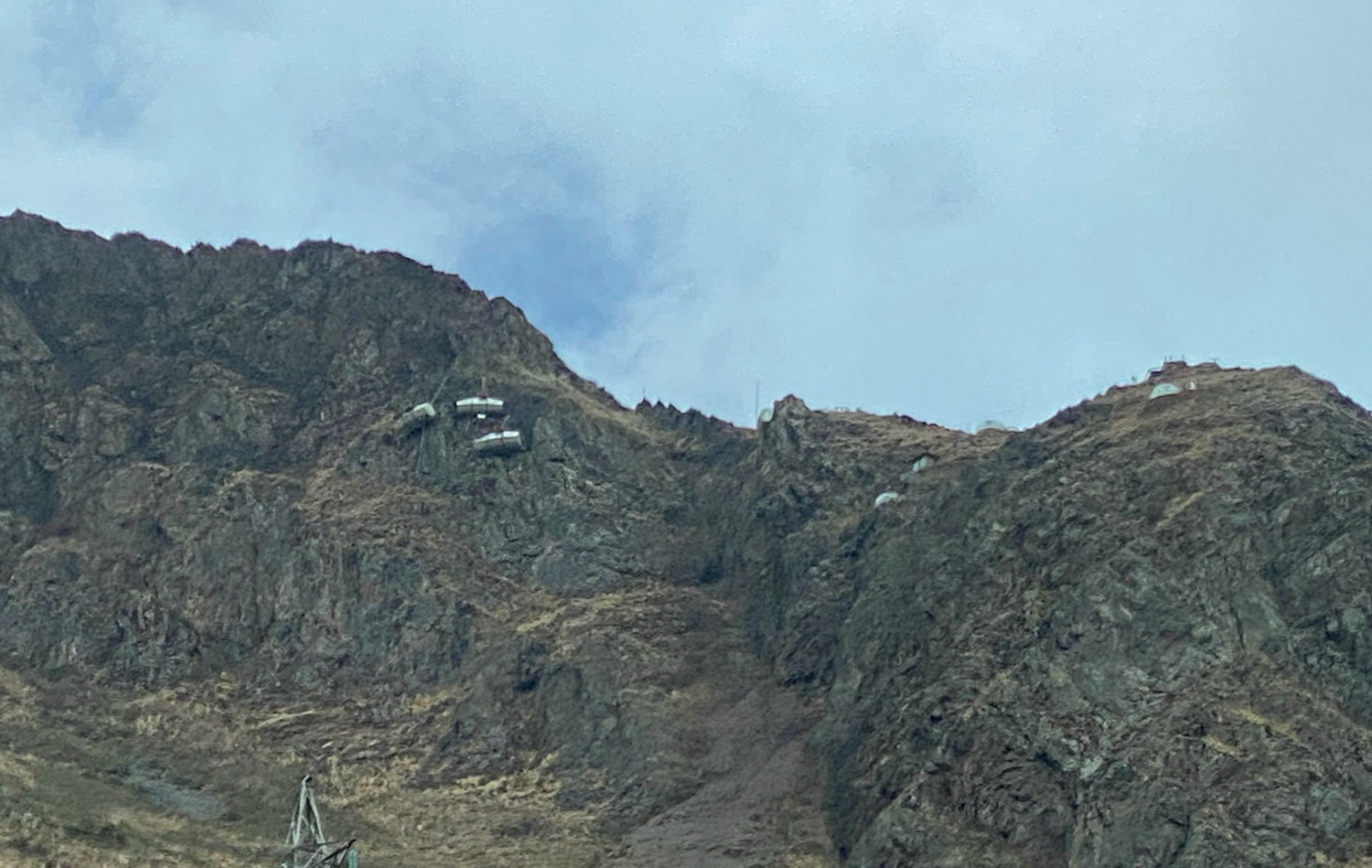
We arrived in Ollantaytambo and our bus was waiting for us.
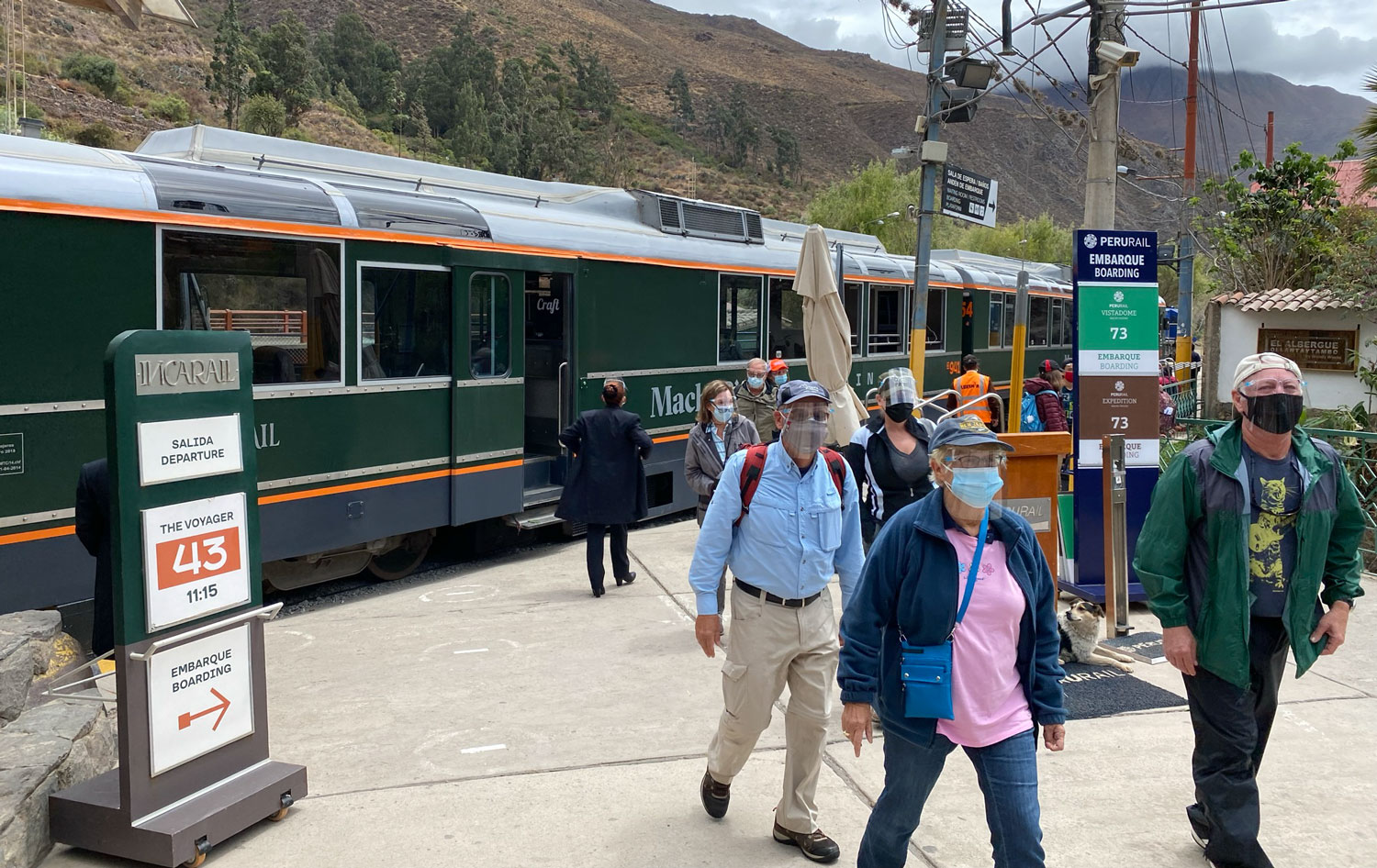
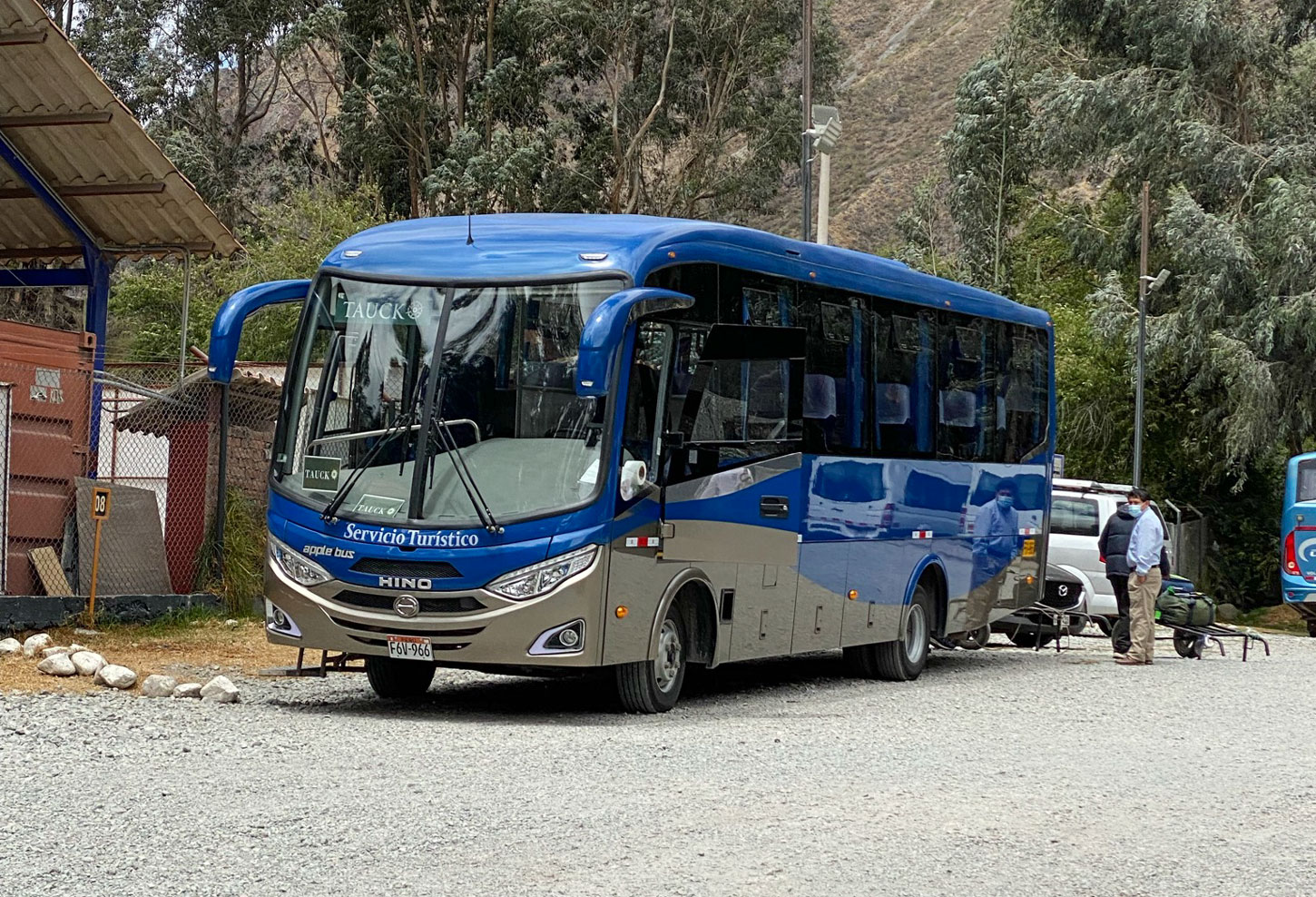
On the ride to Cusco, Jamie pointed out another group of those mountain pod accommodations and I was able to get a bit better picture. How would you like spending a night in one of those pods?

As we were driving back to Cusco I was able to get this picture of a taxi. There are hundreds of these on the roads. They're three-wheel with a small engine in the rear. I expect they could carry two people in tight quarters. With the enclosed body, the passenger and driver are protected from the rain, and road dirt and dust.
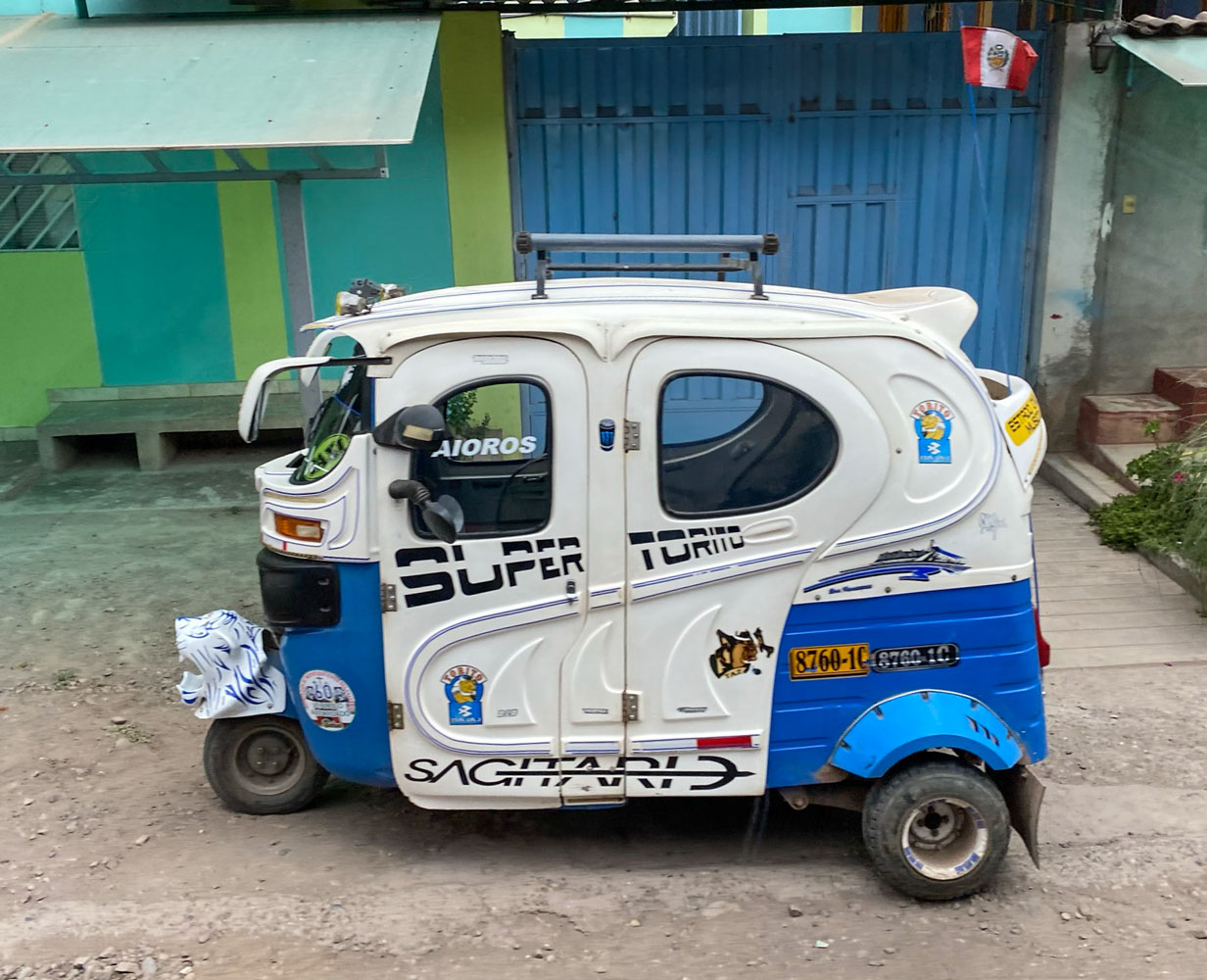
Here's another one, maybe older. It has a canvas cover. They're a good idea for low cost taxi service.
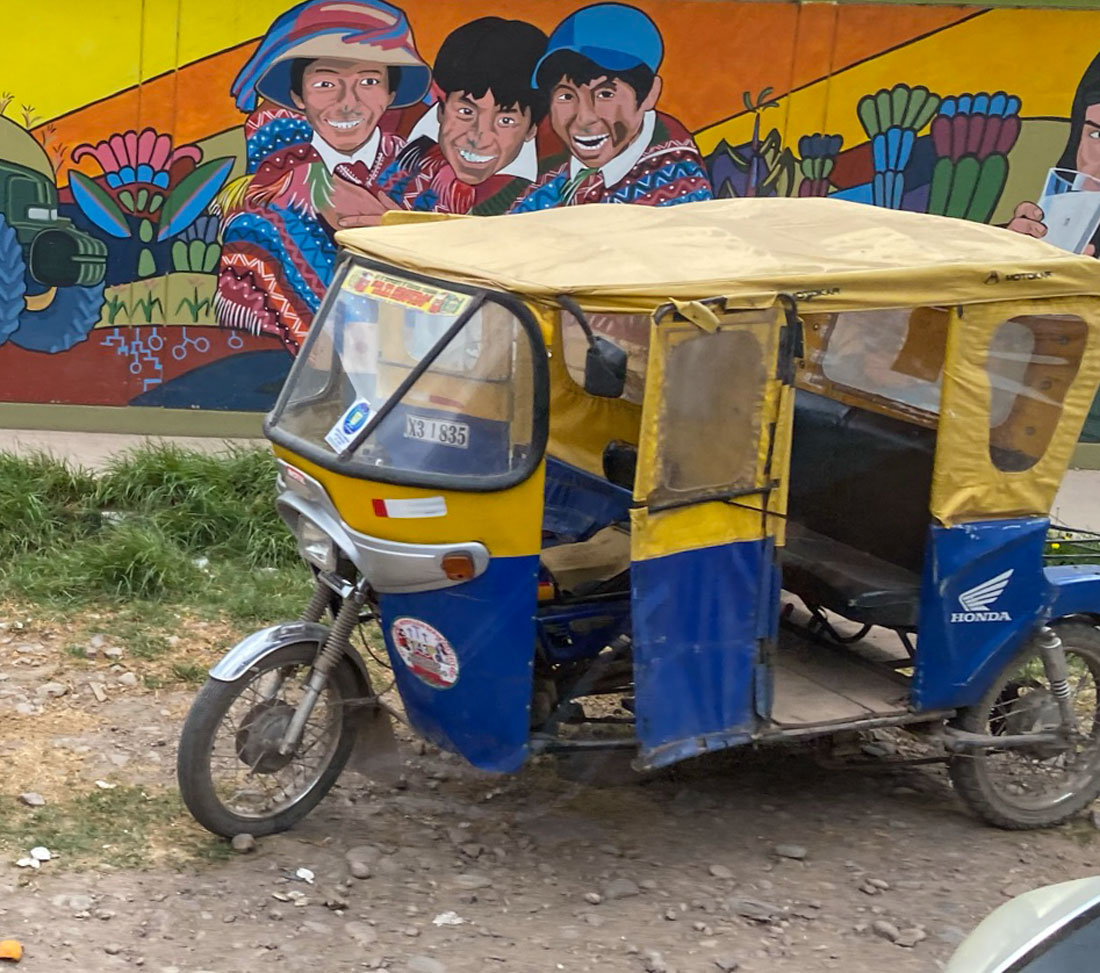
On the way back to the hotel we stopped at a handicrafts place, called "Hands of the Community".
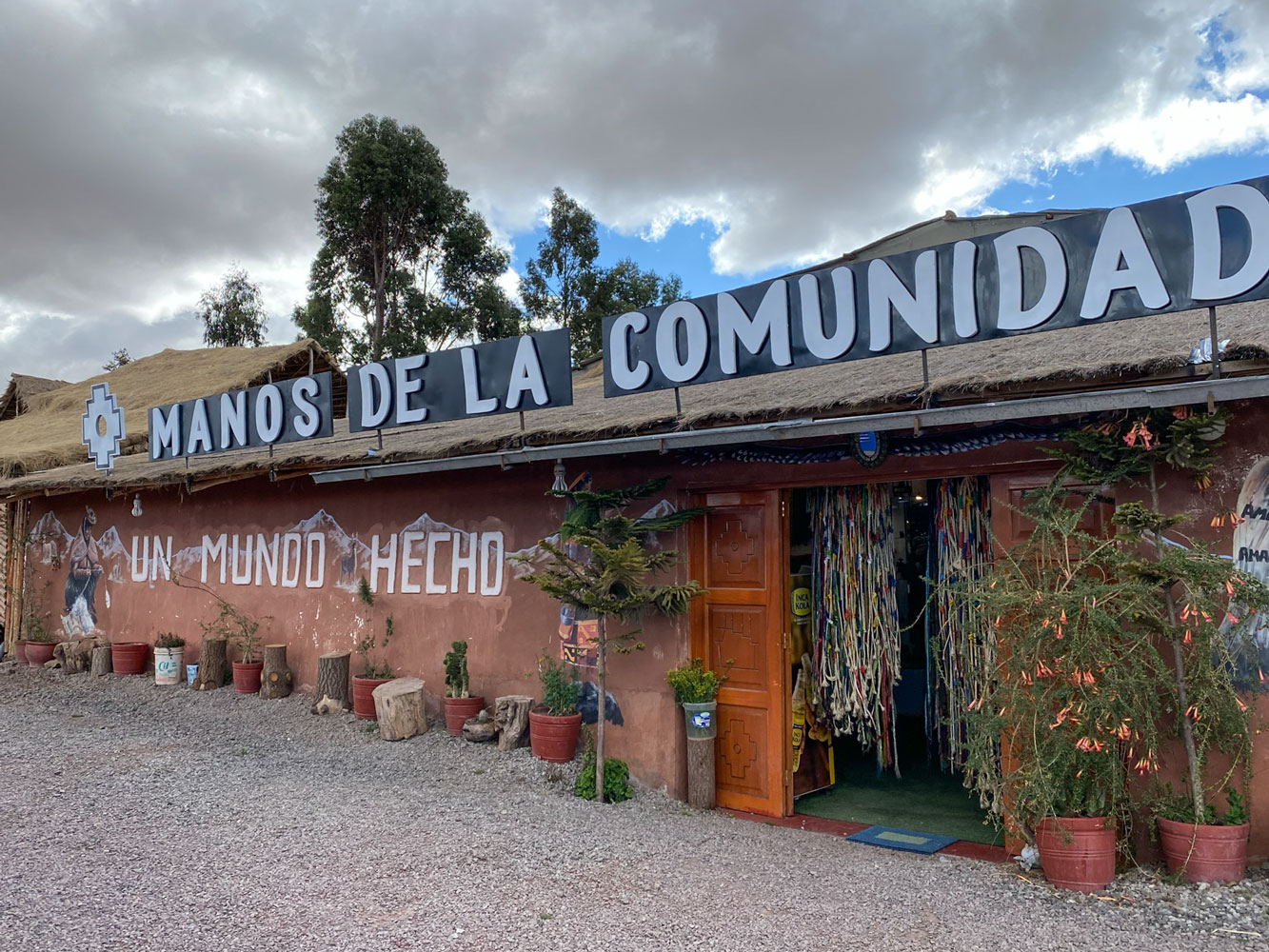
They had various local animals, and we could feed them. One of the llamas spit on Ralph.
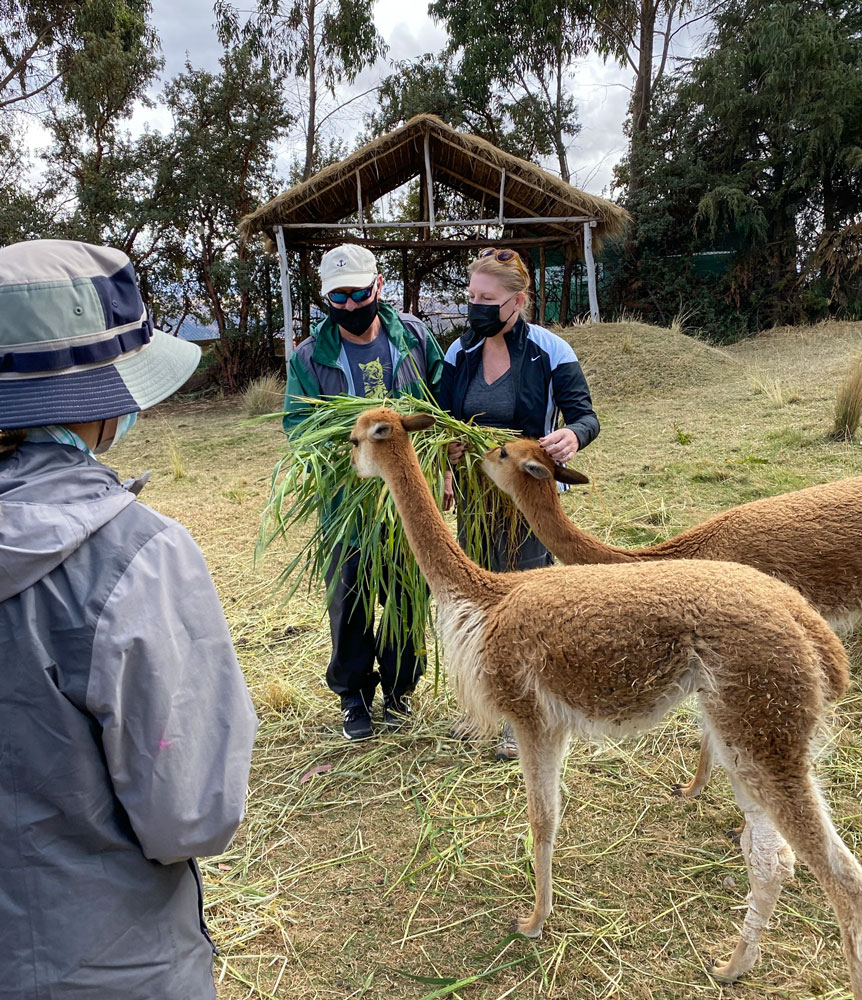
And, of course, they had various handicrafts, including textiles, available for sale.
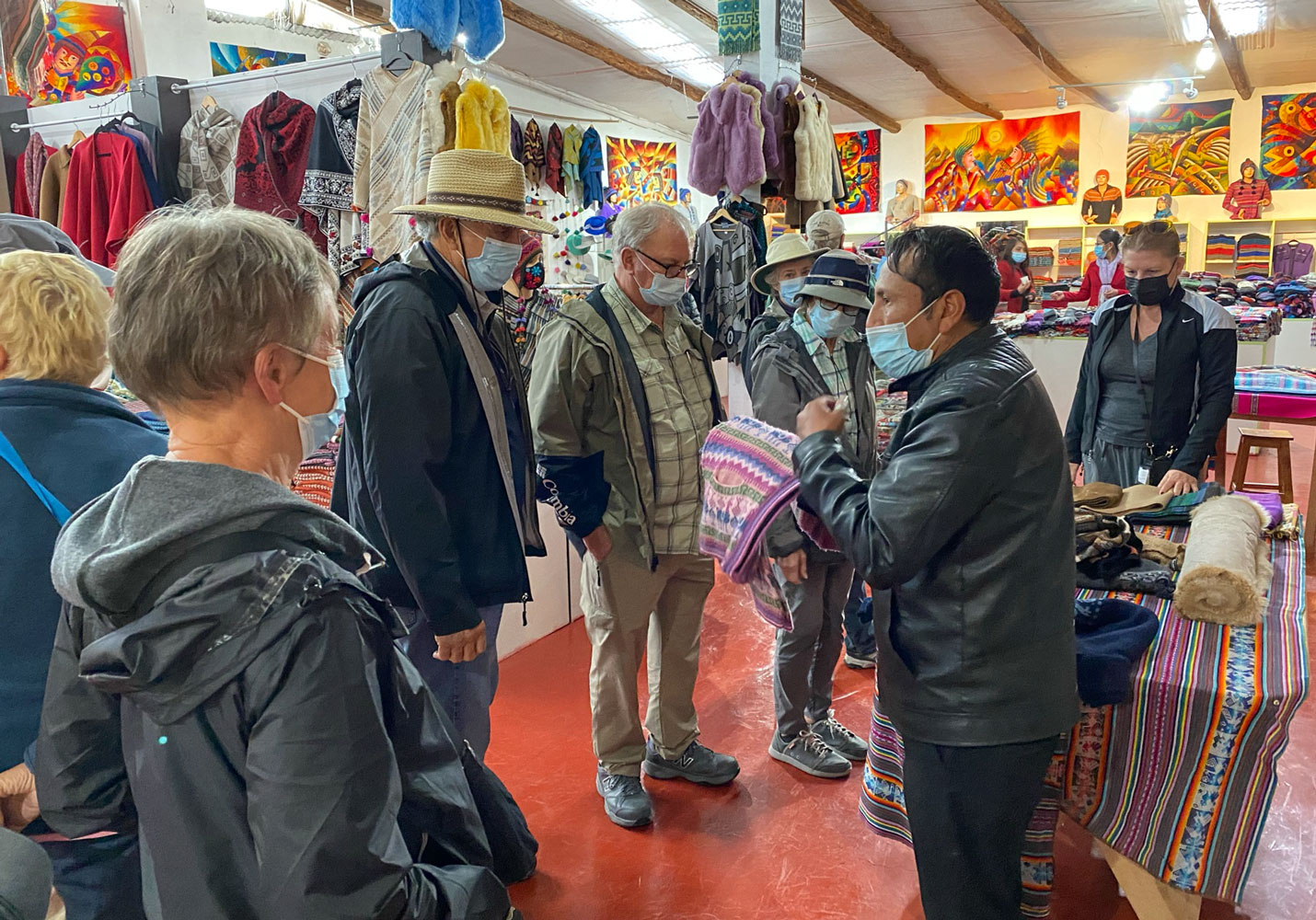
We changed buses to a smaller bus. Marcos explained that the roads we'd take to the hotel in Cusco were too narrow for the big bus.
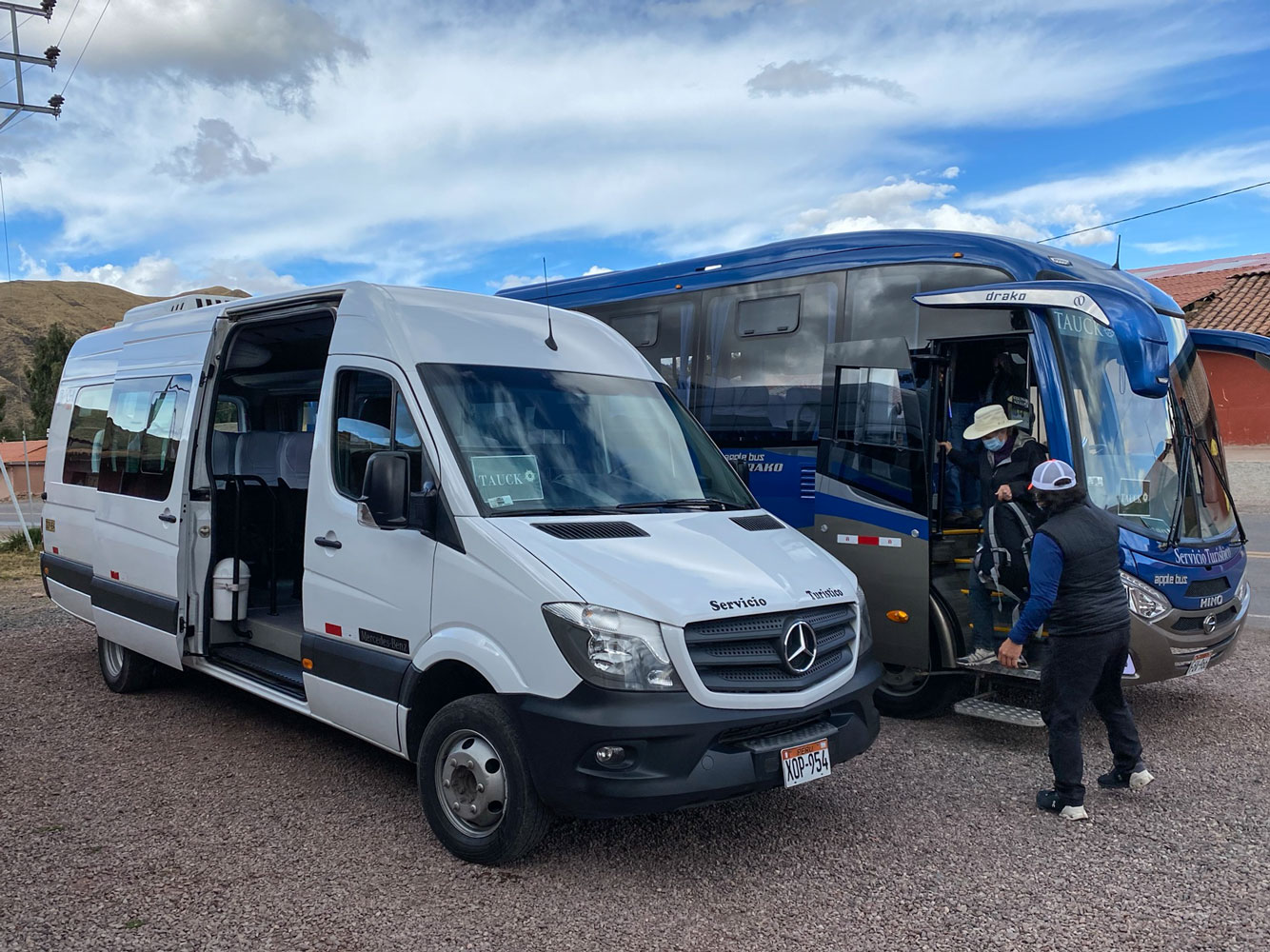
Just before entering Cusco we stopped at Saqsaywaman. This site was another Inca creation, and was thought to be a symbol of the power of the ruling Incas. The fitting of the massive stones was really amazing.
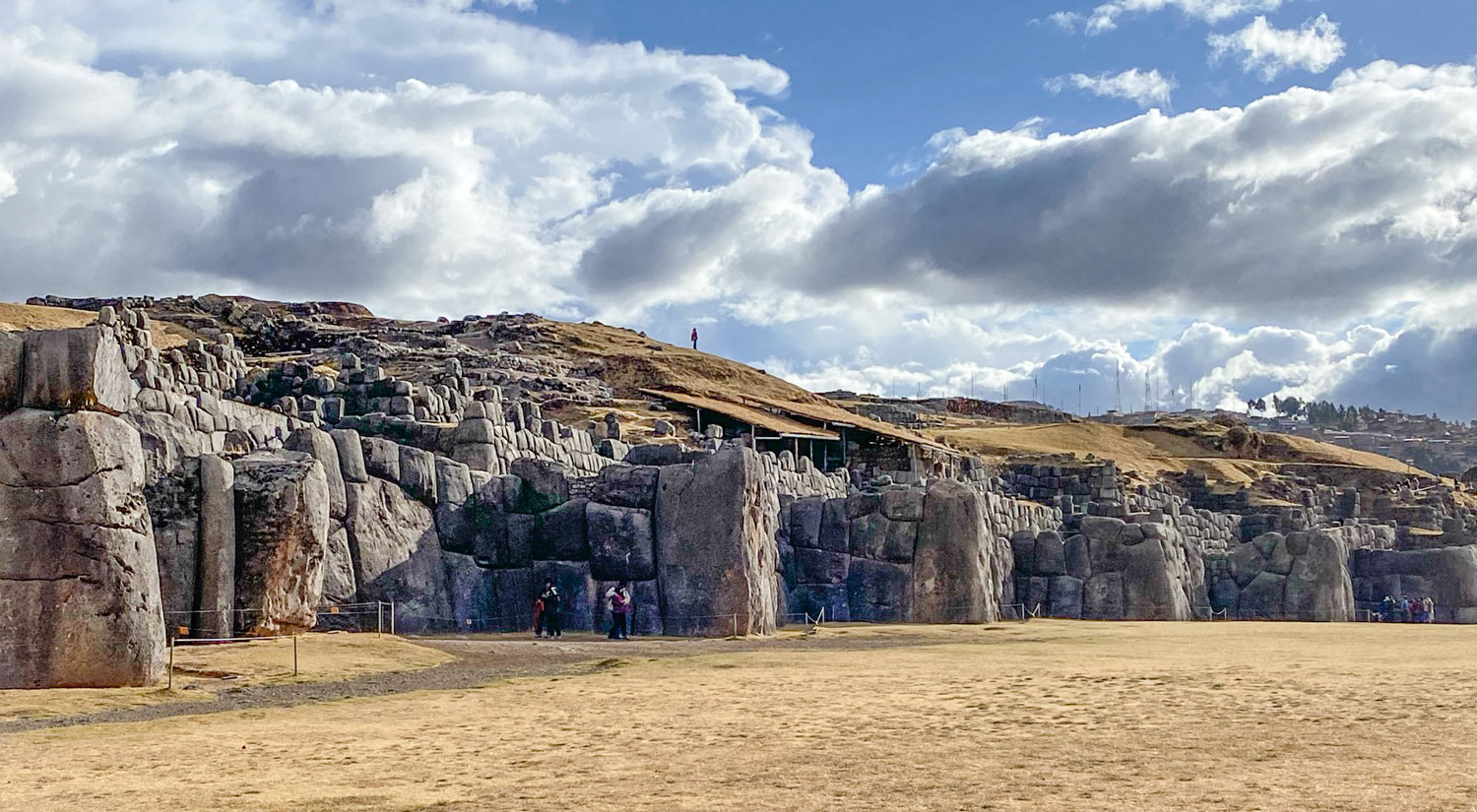
Judy and I posed for a picture there.
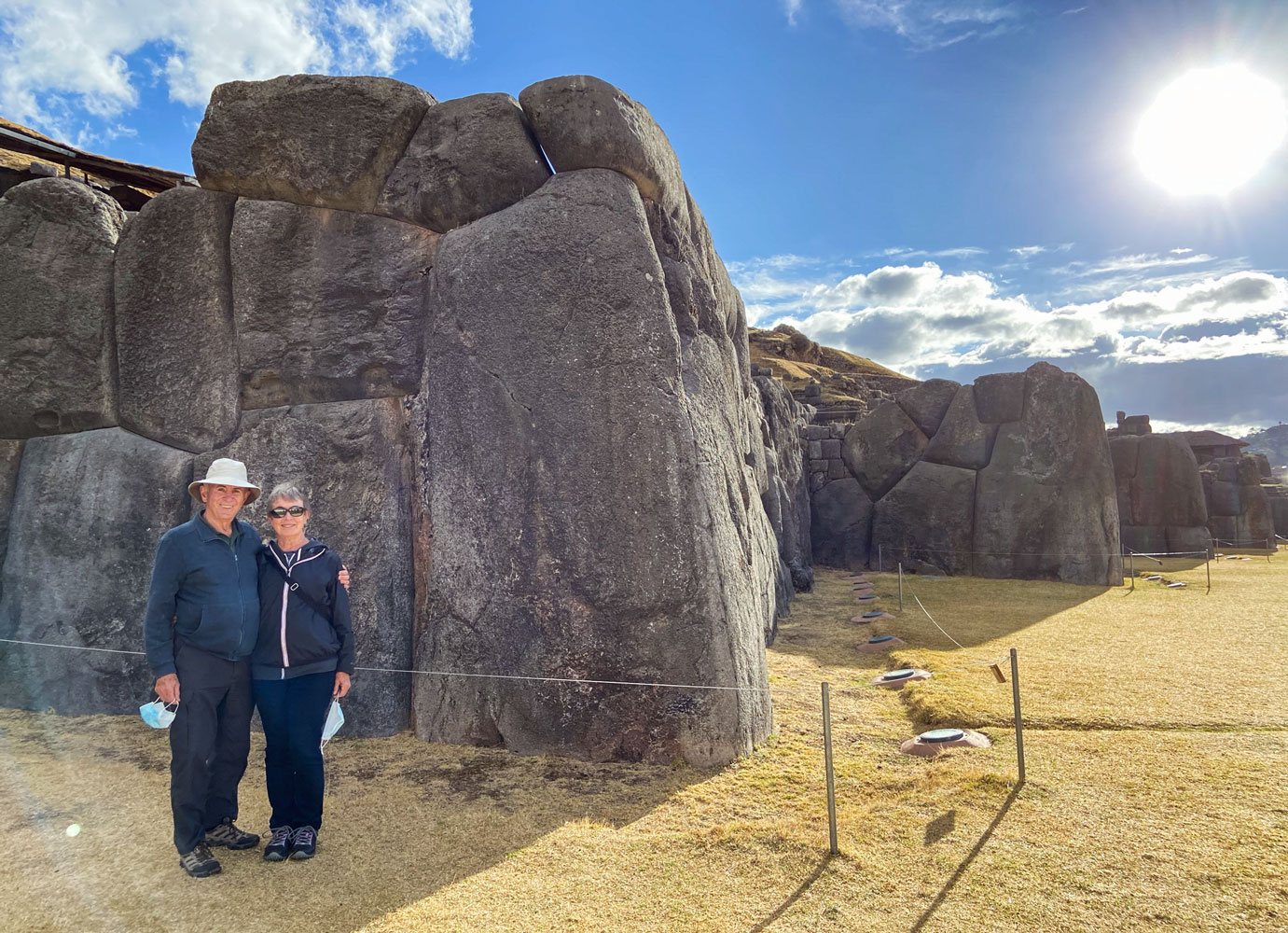
On the way back to the hotel, there were some really tight and steep (downward) streets. The big bus would never have been able to negotiate these streets.
We arrived at the Belmond Palacio Nazarenas in the late afternoon. The Palacio Nazarenas proved to be a wonderful hotel. Our room was very large and well appointed. We could probably fit our whole room at the Belmond Machu Picchu in the bath area of this room.
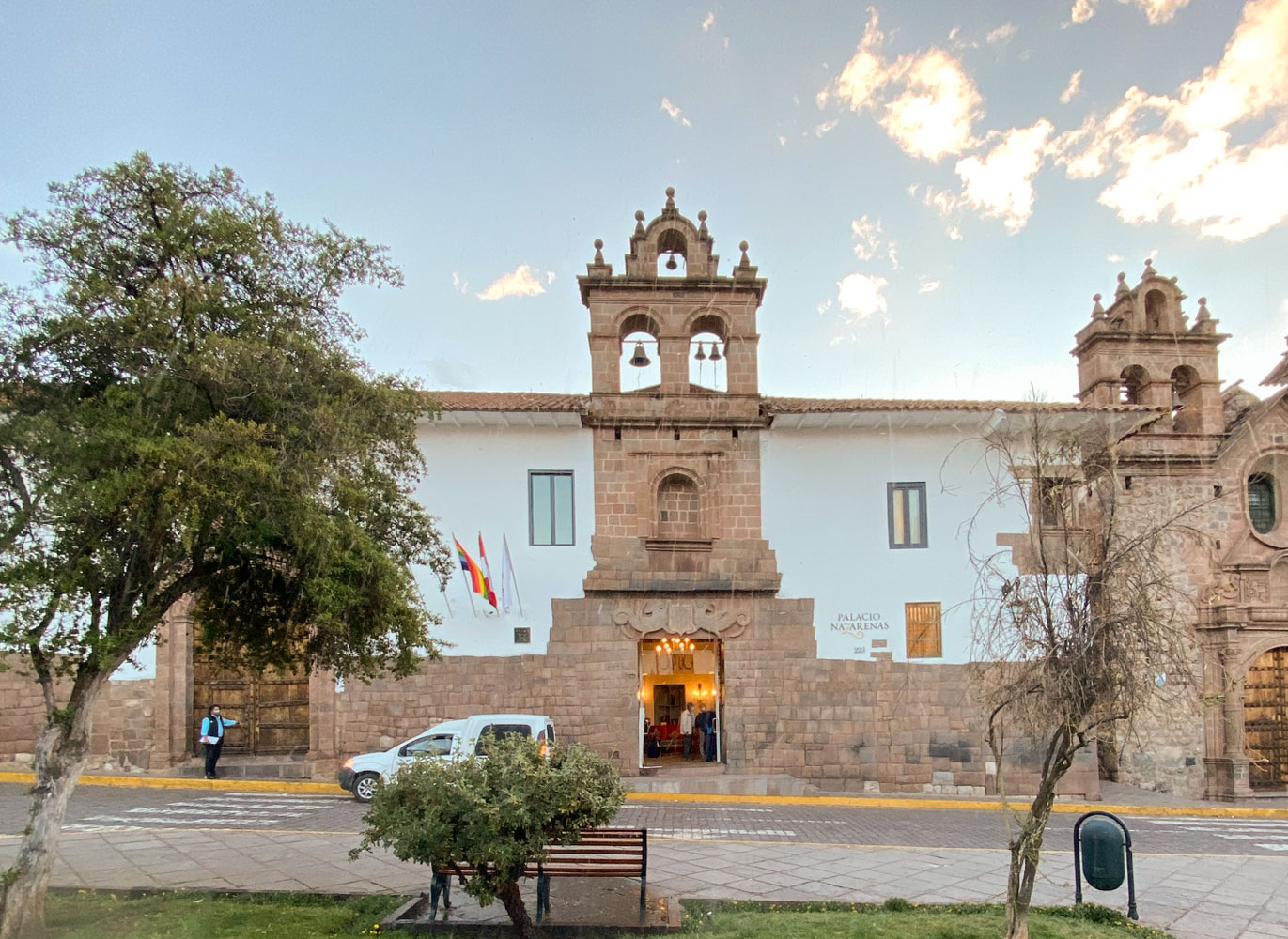
Here's a look at our room at the Palacio Nazarenas.
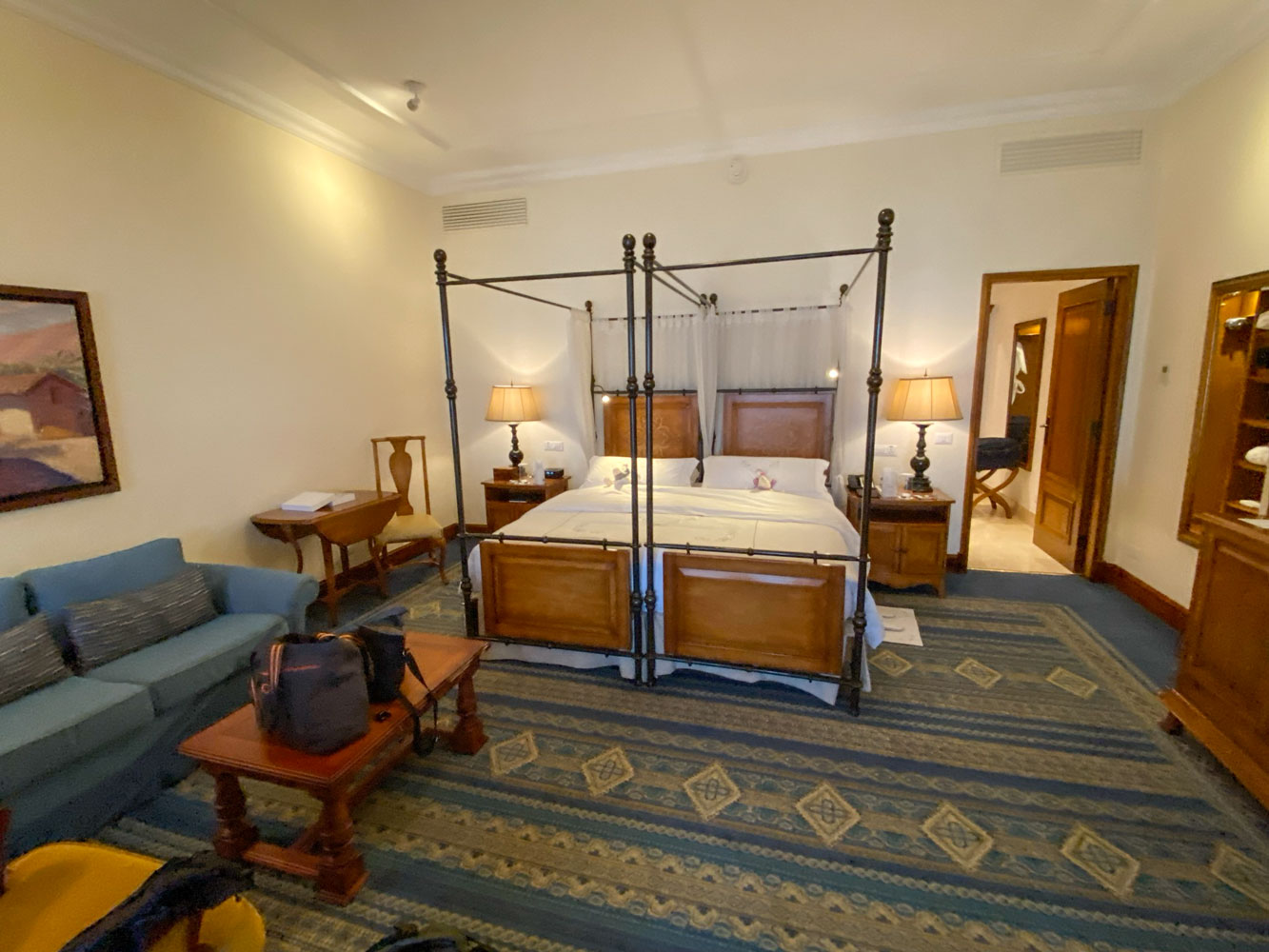
We had dinner in the restaurant and then went to bed,
9/16/2021 (Thursday) We were up early this morning to have a COVID test, required for entry into Ecuador. I'm happy to report that everyone tested negative.
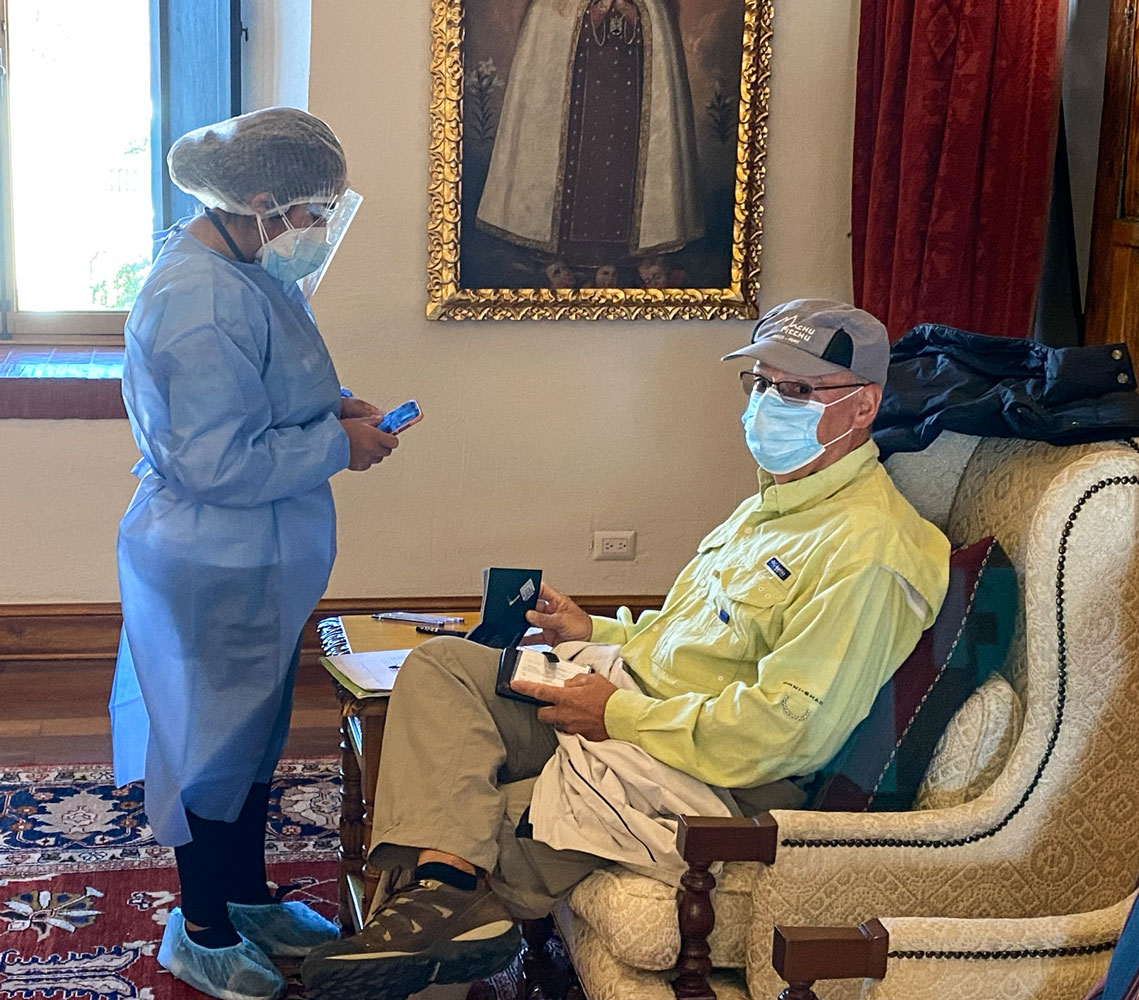
We're taking a tour of the Cusco Highlands today. Our first stop was at a rural commune where they were practicing ancient crafts, including weaving. This was a really interesting visit.
The commune was located near a historical site of Inca terraces.
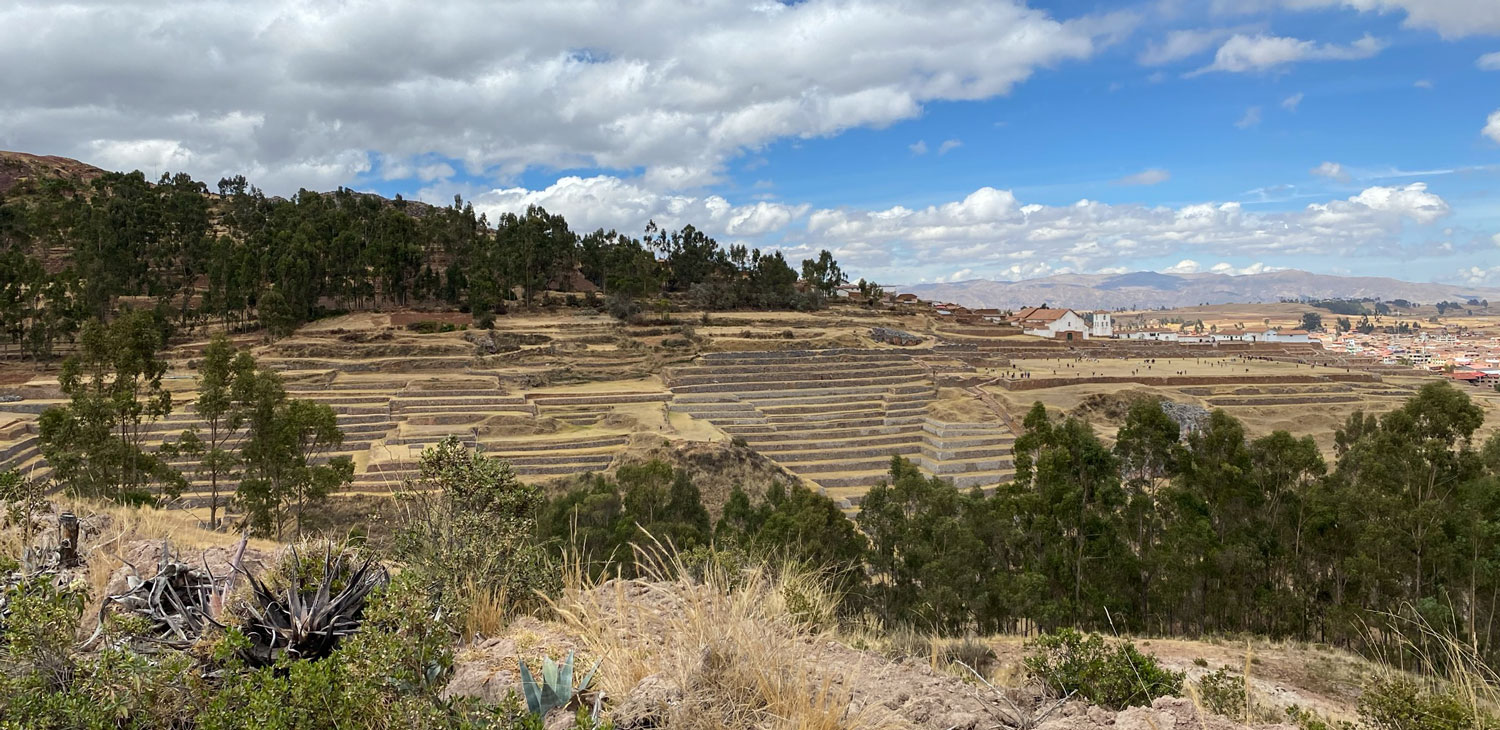
The women demonstrated how they dyed the llama (and other animals') wool using natural dyes. Vicuña wool produces the best quality fibers and makes the finest quality products. The woman leading the group was friendly and funny, and enjoyed presenting their skills to us. Their teamwork was perfect.
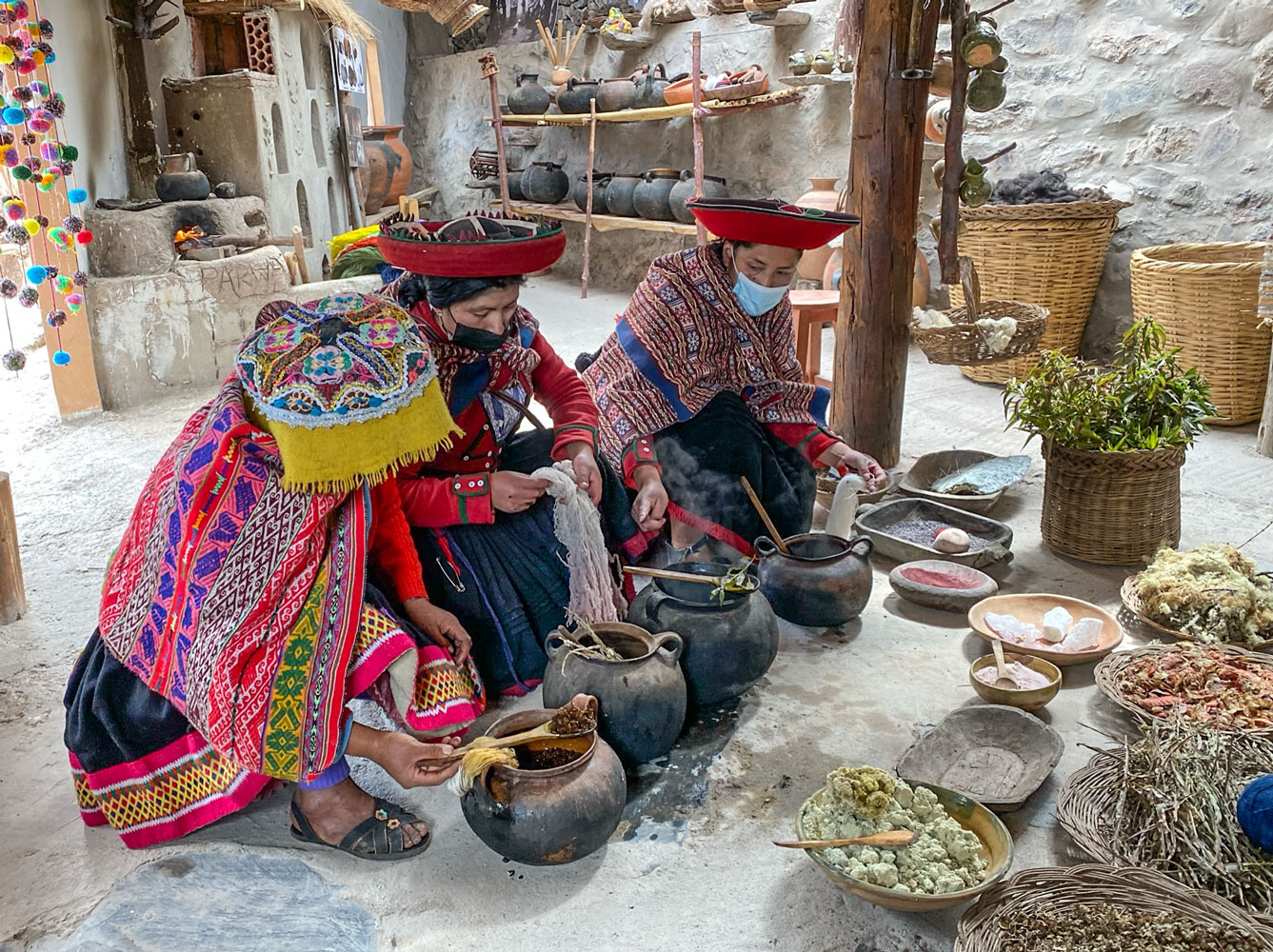
Then they demonstrated how they weave the fibers. The weaver is creating a table runner similar in design to the one we later bought. You can see the part of the weaving she has completed that is rolled up and near her blue shirt. She had been taught this skill at the age of eight.
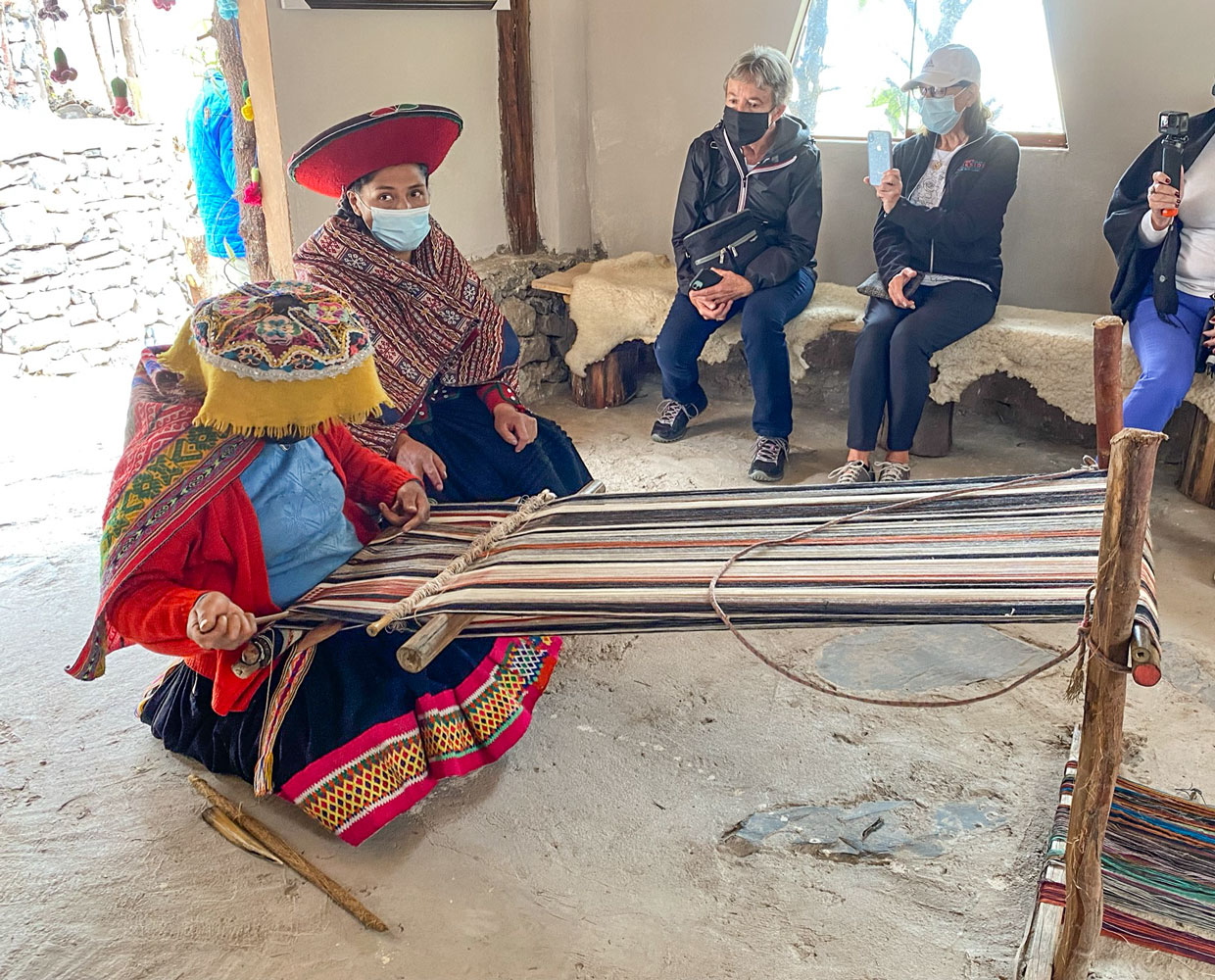
Another demonstration I found especially interesting was the way they wrap a baby for carrying it on their back. I can't show each step, but here she is wrapping the baby in a blanket.
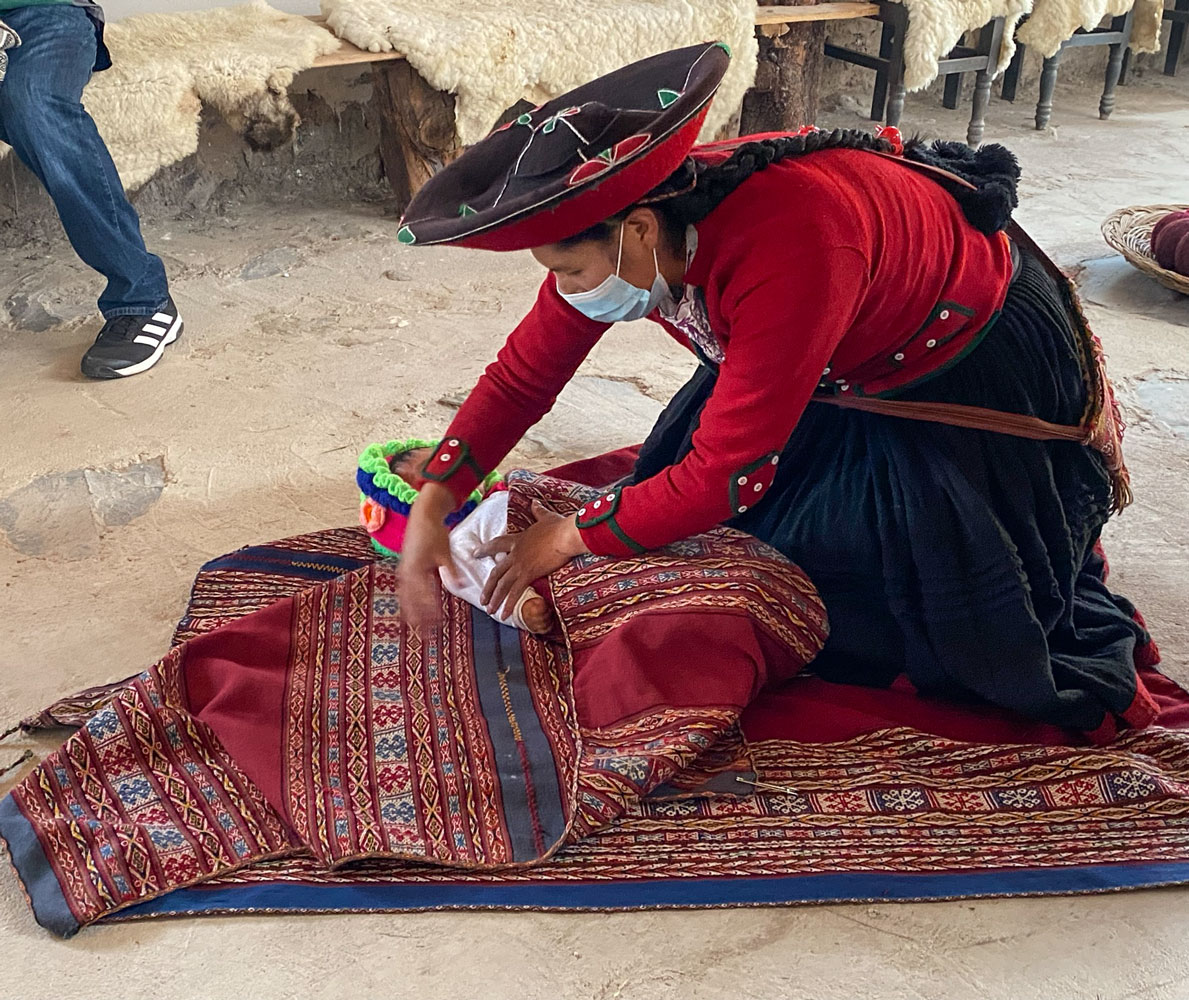
After the baby is wrapped properly, she swings the wrapped baby up on her back and fastens the blanket around her neck. This allows her to work while the baby is on her back. The baby's mother is in the background, watching with some concern:-)
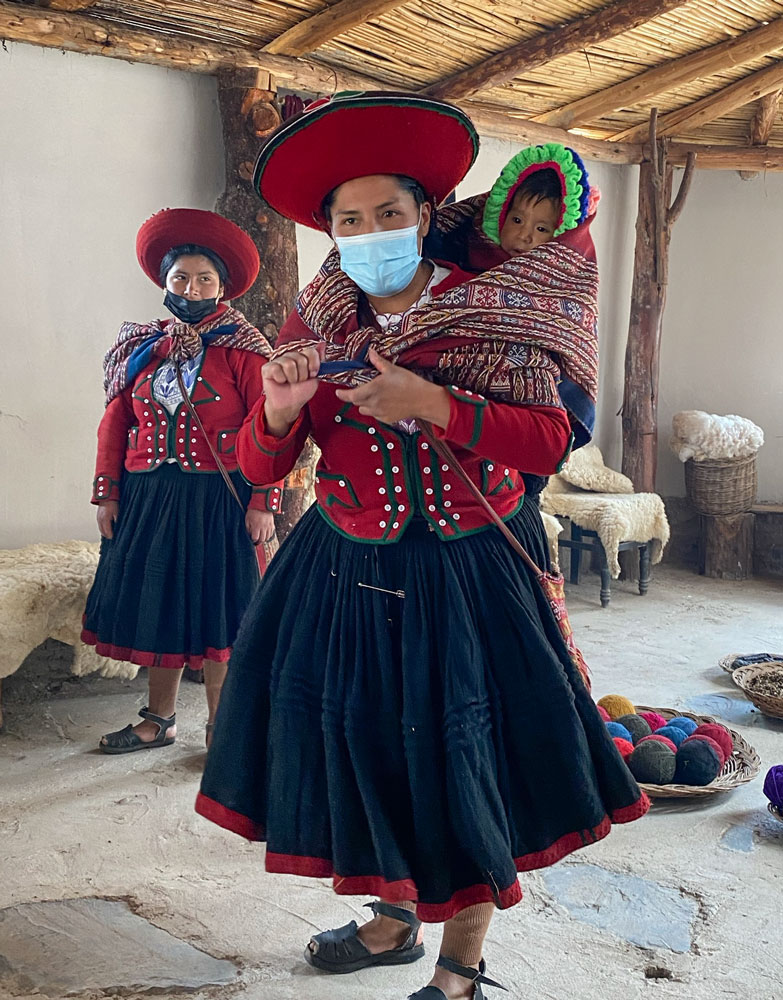
Then we went to their small store to see their hand-made products. We bought a "table runner" which has traditional design elements - the condor, the puma and the snake. These were religious symbols to the Incas.
Because of the way they weave these textiles, they can only be about this wide. If they want to make a wider product, they sew two or more together.

Our hosts came out and sang a song as we boarded the bus. The little wrapped baby is now on her mom's back .
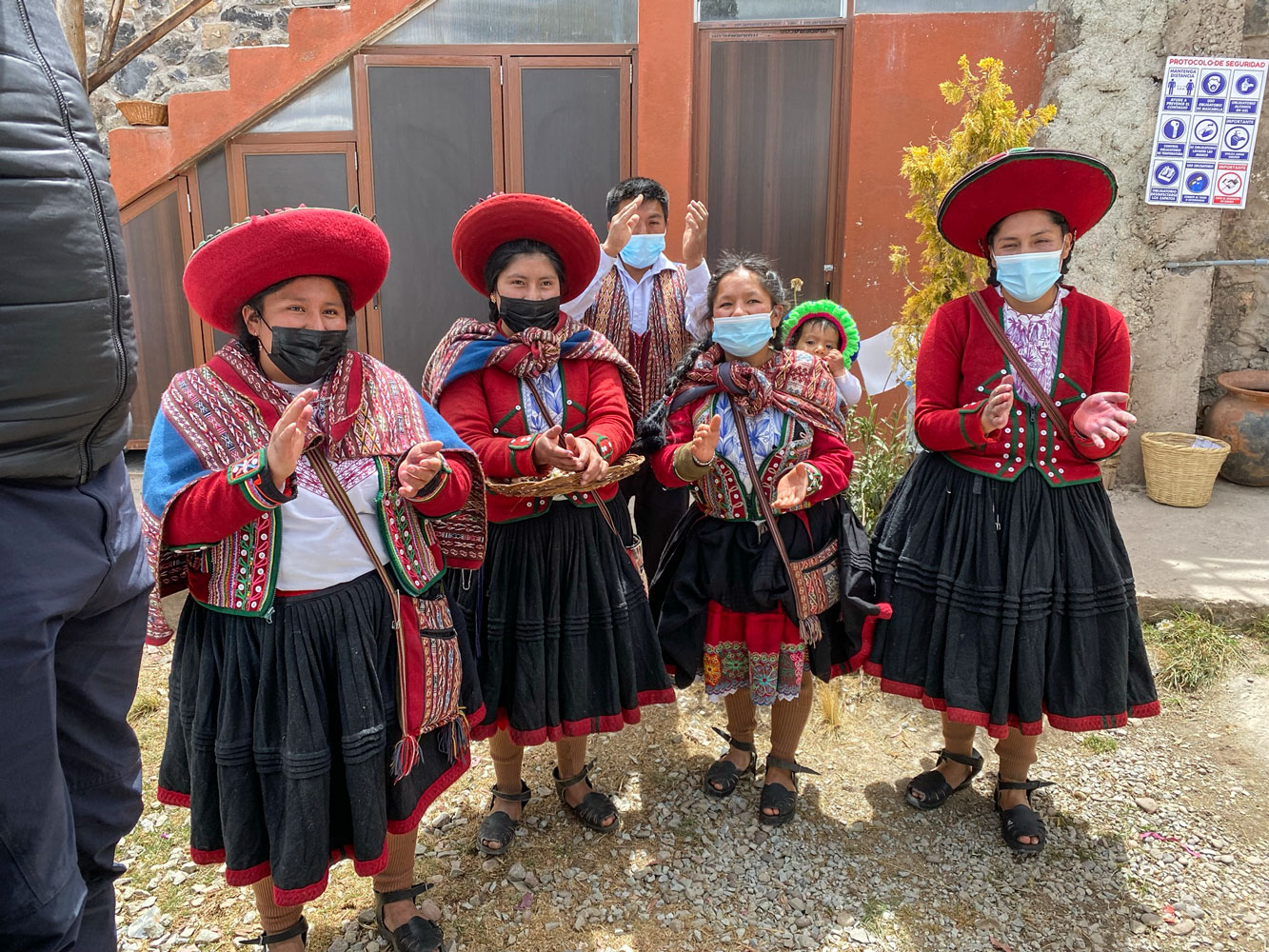
This was a very interesting visit. I'm glad Tauck took us to this place.
Our next visit was to the community of Mullak's Misminay. Some of the community was there to greet us.
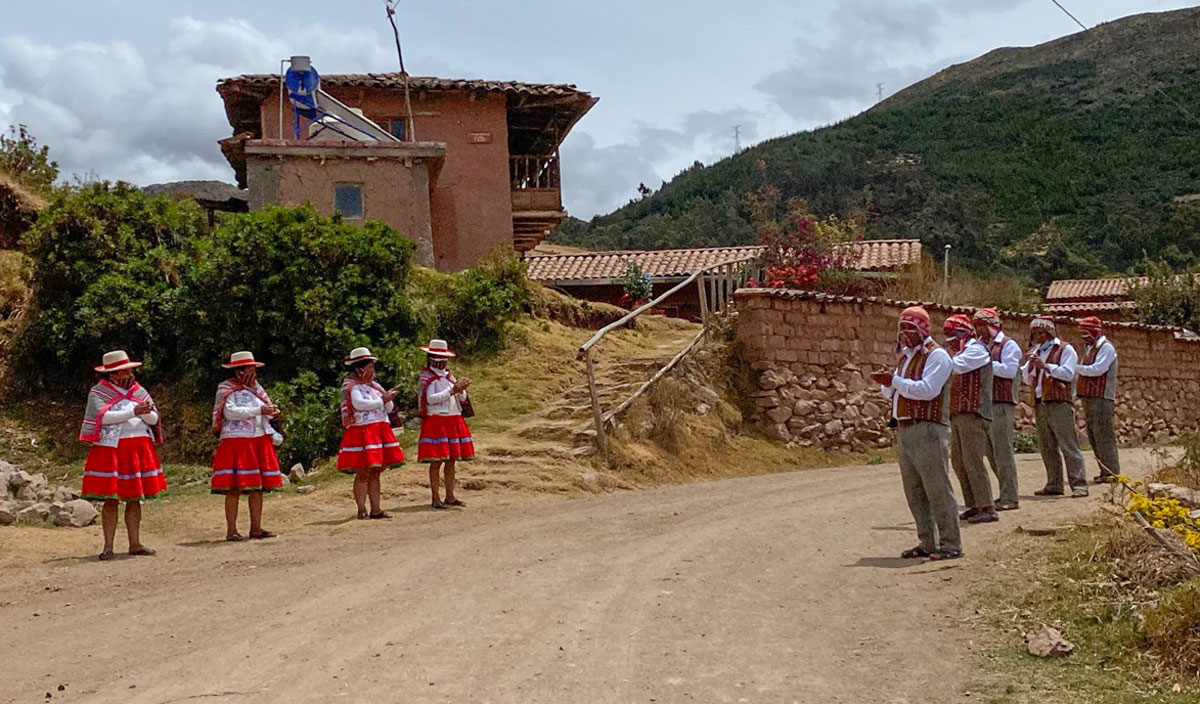
They were all wearing COVID masks except the flute player. They greeted us with ancient traditional music, and we followed them into the meeting area.
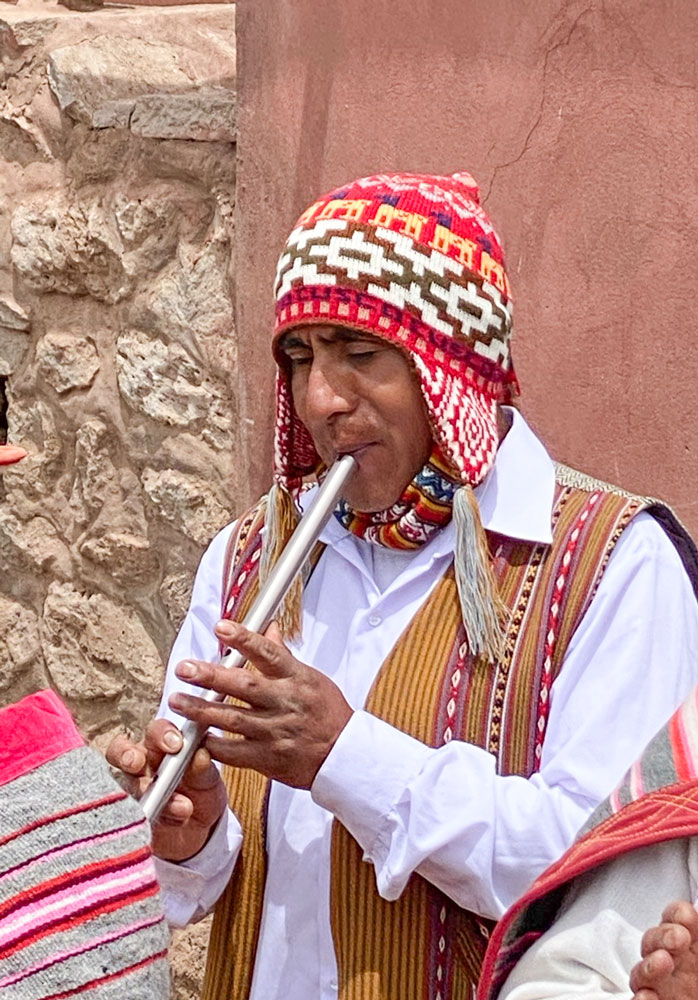
We divided into two groups: one group did a cooking demonstration and the other was to hear about agriculture. I went with the agriculture group and Judy went with the cooking group.
I thought the agriculture group would talk about what crops they planted and how they cared for them, but they actually talked about religious practices they used in caring for the land. Here are some of the items they used in their ceremony.

They use a traditional "shovel" and showed us how to use it. There's a metal part at the bottom and the rest is wood. I asked if they had a blacksmith in the village to make the metal part and they told me that the metal is reclaimed auto leaf spring material, and that a blacksmith comes to the village occasionally and makes what they need. I didn't get a chance to ask what they used before the time of automobiles.
The "shovels" are quite heavy, but they work.
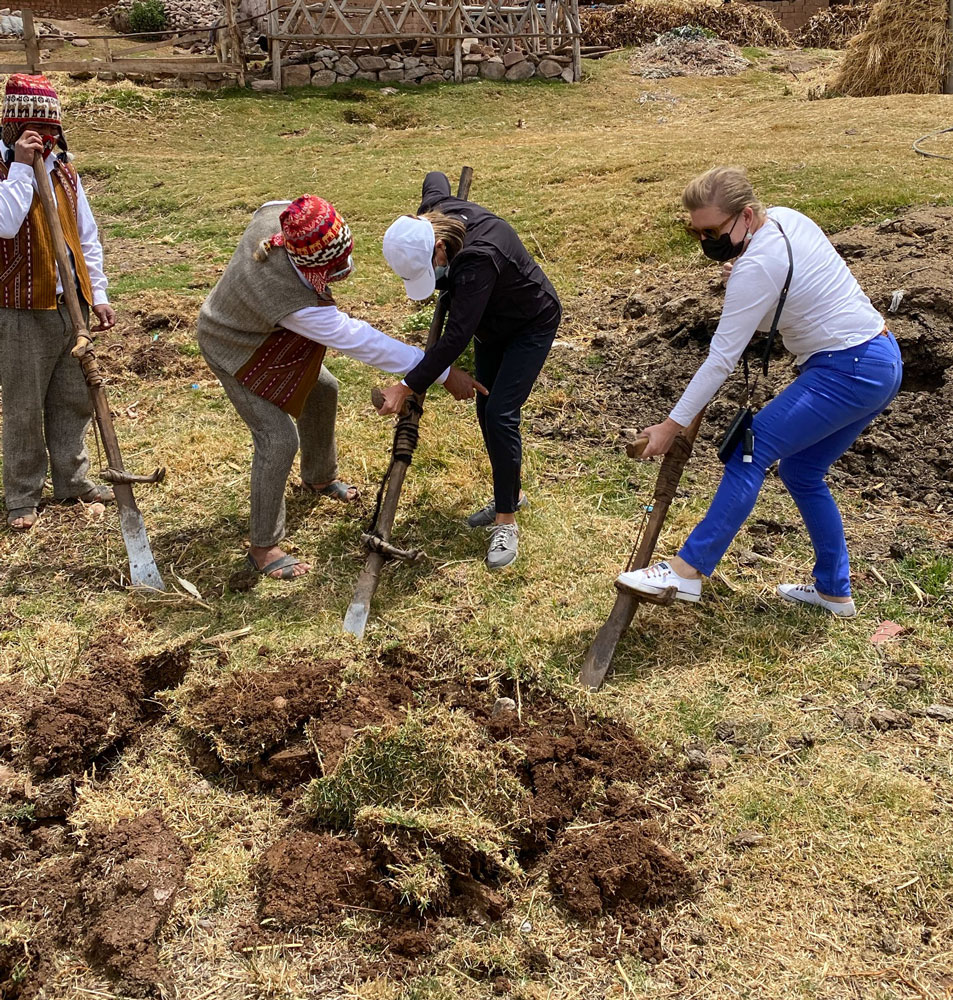
Then we had lunch. The menu was traditional, and simple, but good.
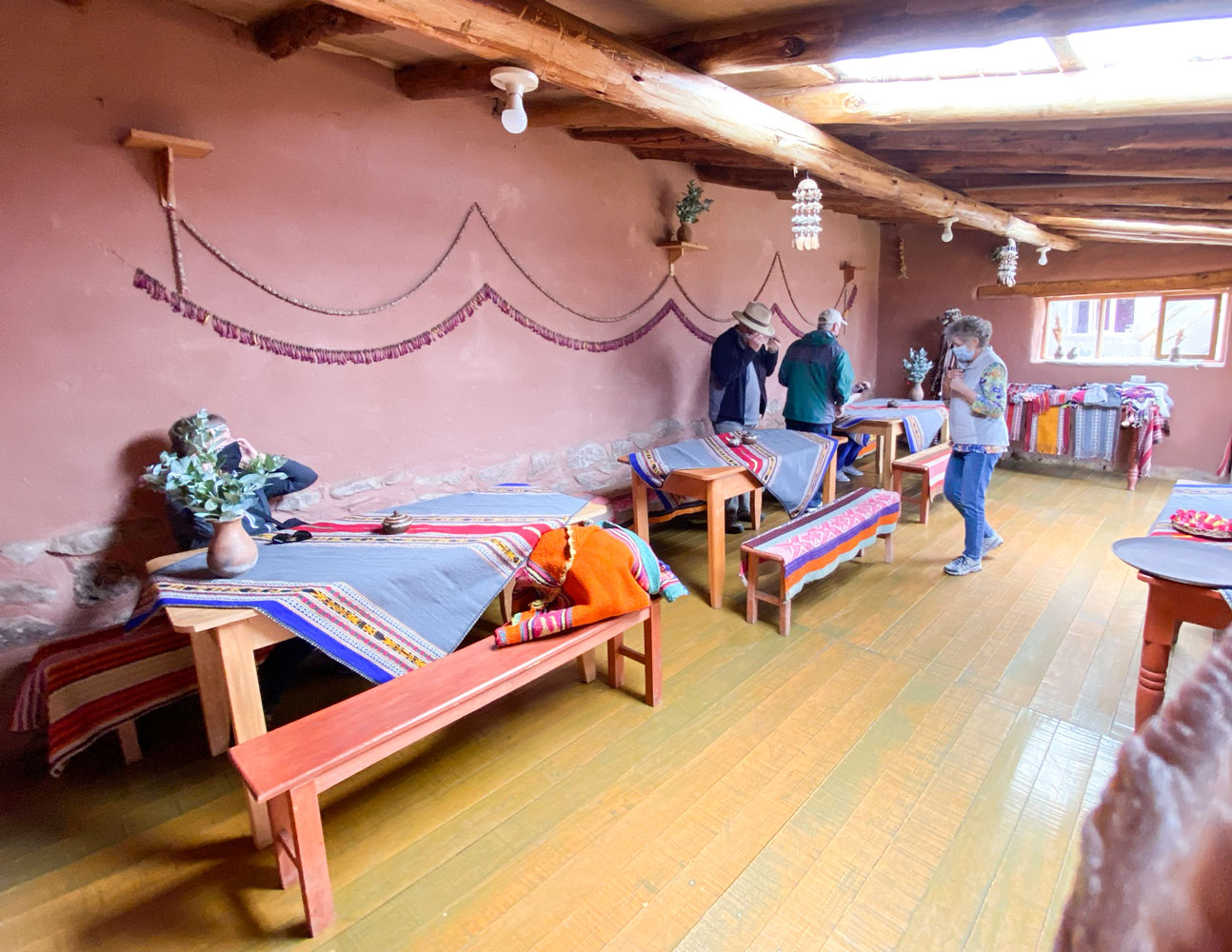
All-in-all, I felt that the first place we went to (the weaving place) was much more interesting. Unfortunately, Misminay seemed too commercial, too touristy.
Marcos said that the first place we visited is somewhat new to Tauck, so perhaps they aren't tourist-jaded yet.
After we left Misminay we headed for the salt production area. In ages past, the area was the floor of the ocean. As the land rose, lakes with no outlet formed, and eventually salt collected. There appears to be a salt dome under the mountain. Water percolates through the salt and flows out as a small stream of very salty water. The people of the area began collecting the salt by building evaporation ponds.
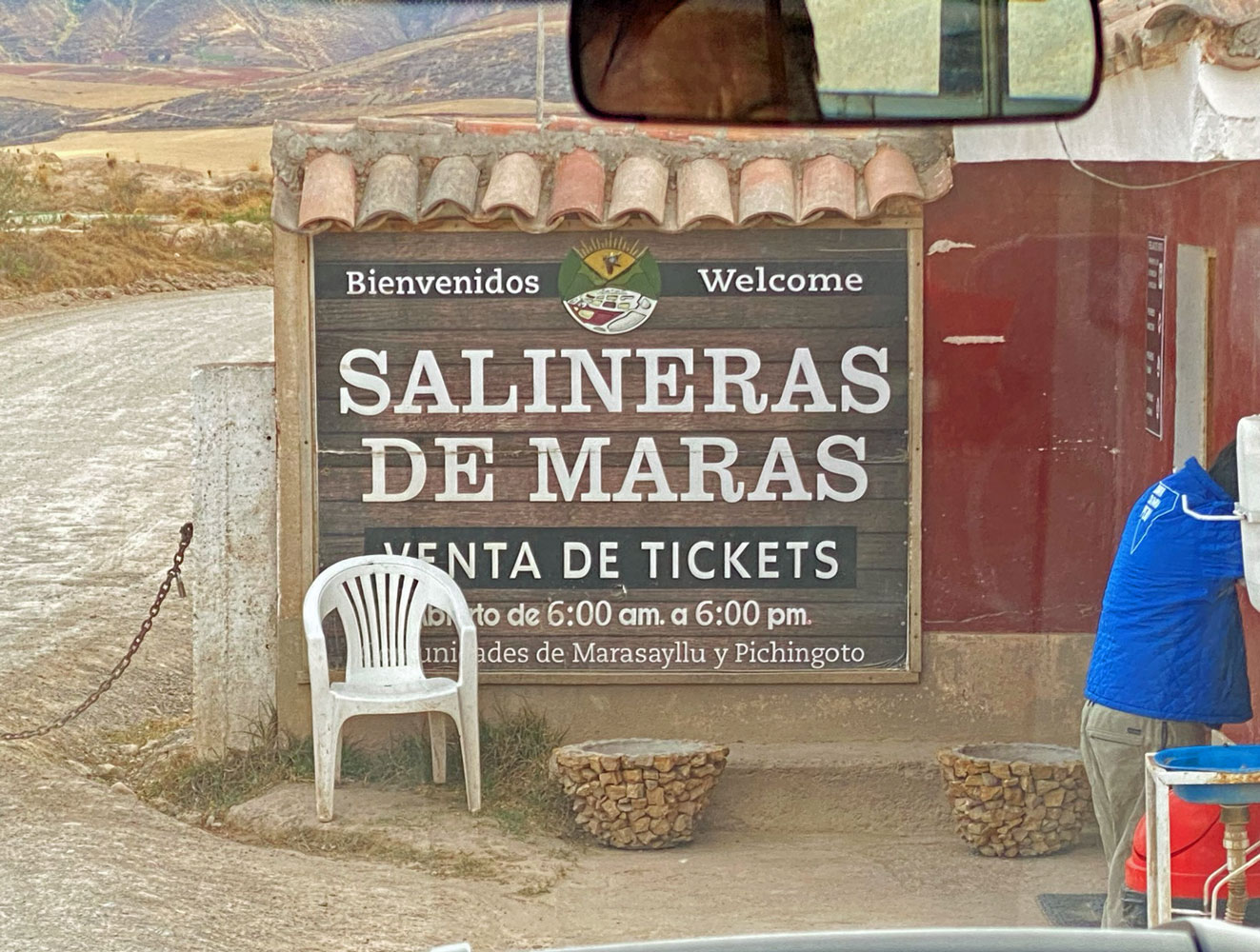
Here's a wide view of the salt evaporation ponds. The facility is co-owned by the community and individuals, and the salt is shipped worldwide. Each small plot is allotted a certain amount of inflow at a time, so each has a schedule of "harvest".

Here's a closer look at the evaporation ponds. We saw similar evaporation ponds in Sicily, but there the salt water came directly from the ocean.
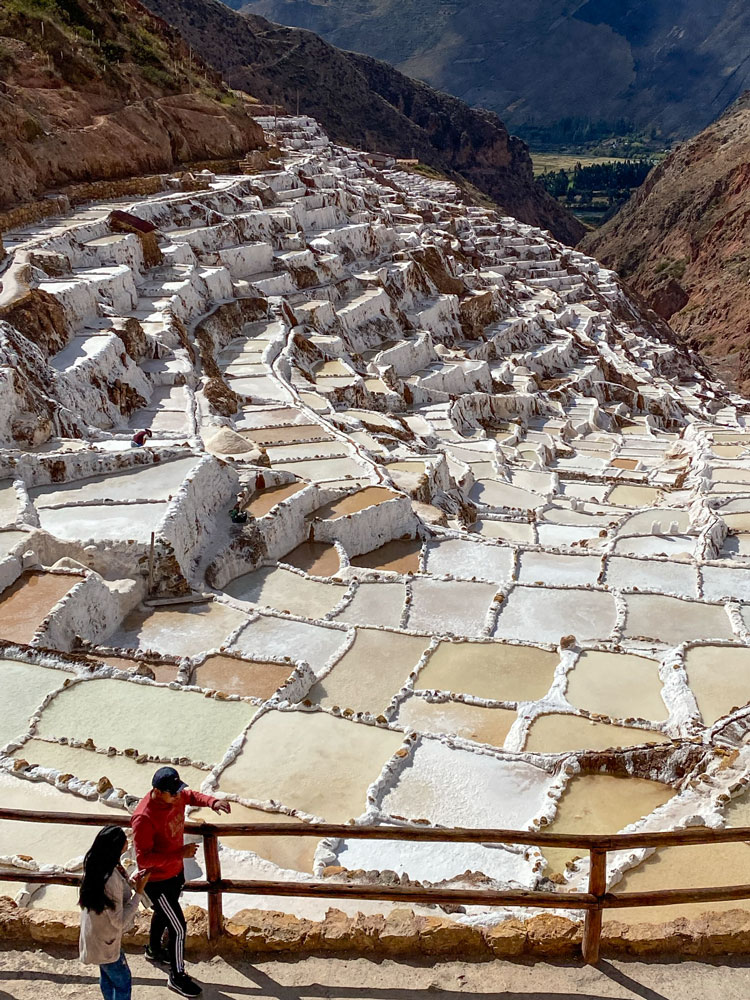
We bought two small packages of the salt.

Then it was back to the hotel. The Tauck group got together in the bar and had drinks and snacks instead of going to dinner.
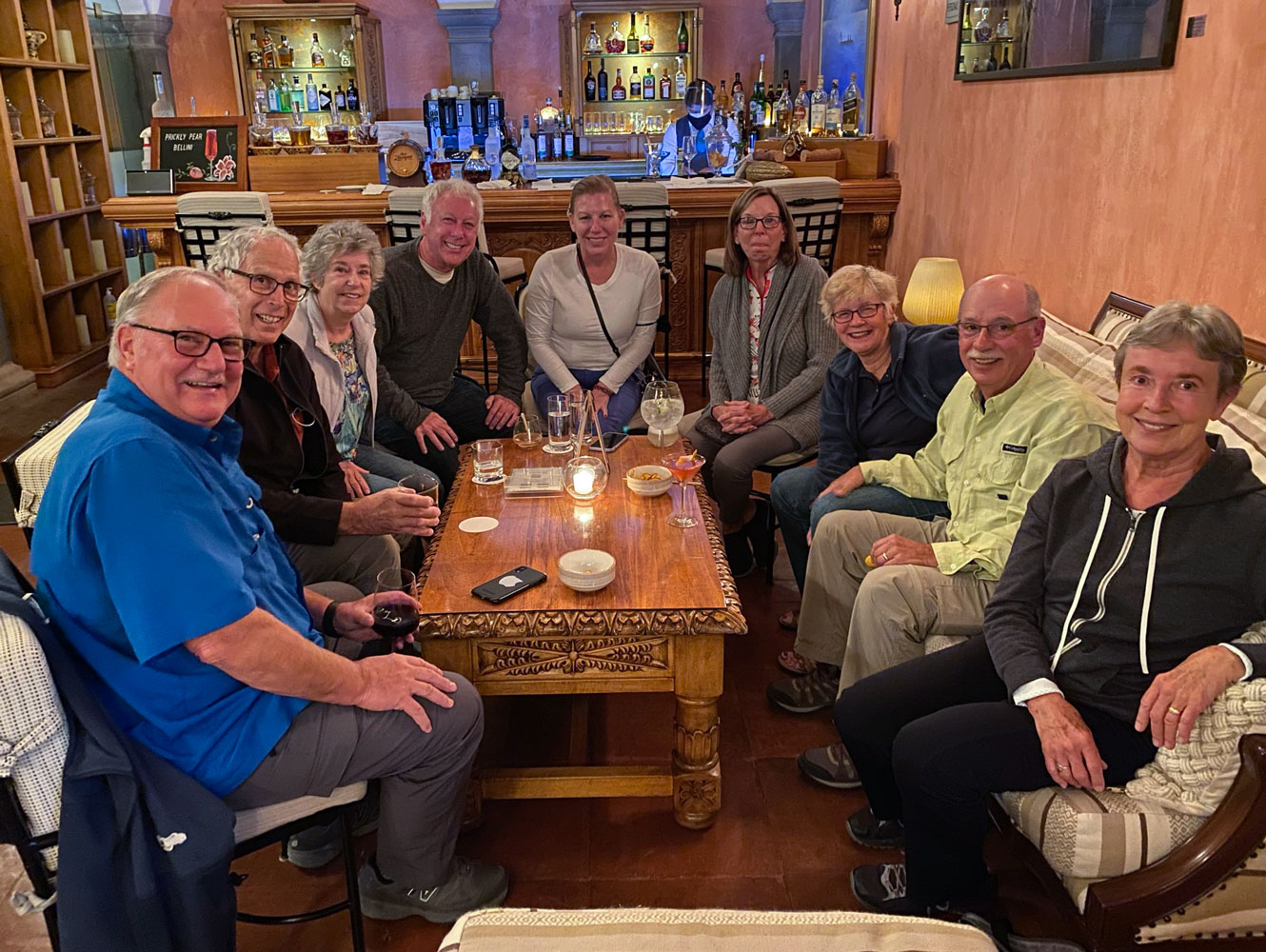
Then it was to bed. Tomorrow is a major travel day to get to Guayaquil. First, we fly to Lima, then a flight to Quito, and finally a flight to Guayaquil. Due to COVID, there is no direct flight from Lima to Guayaquil.